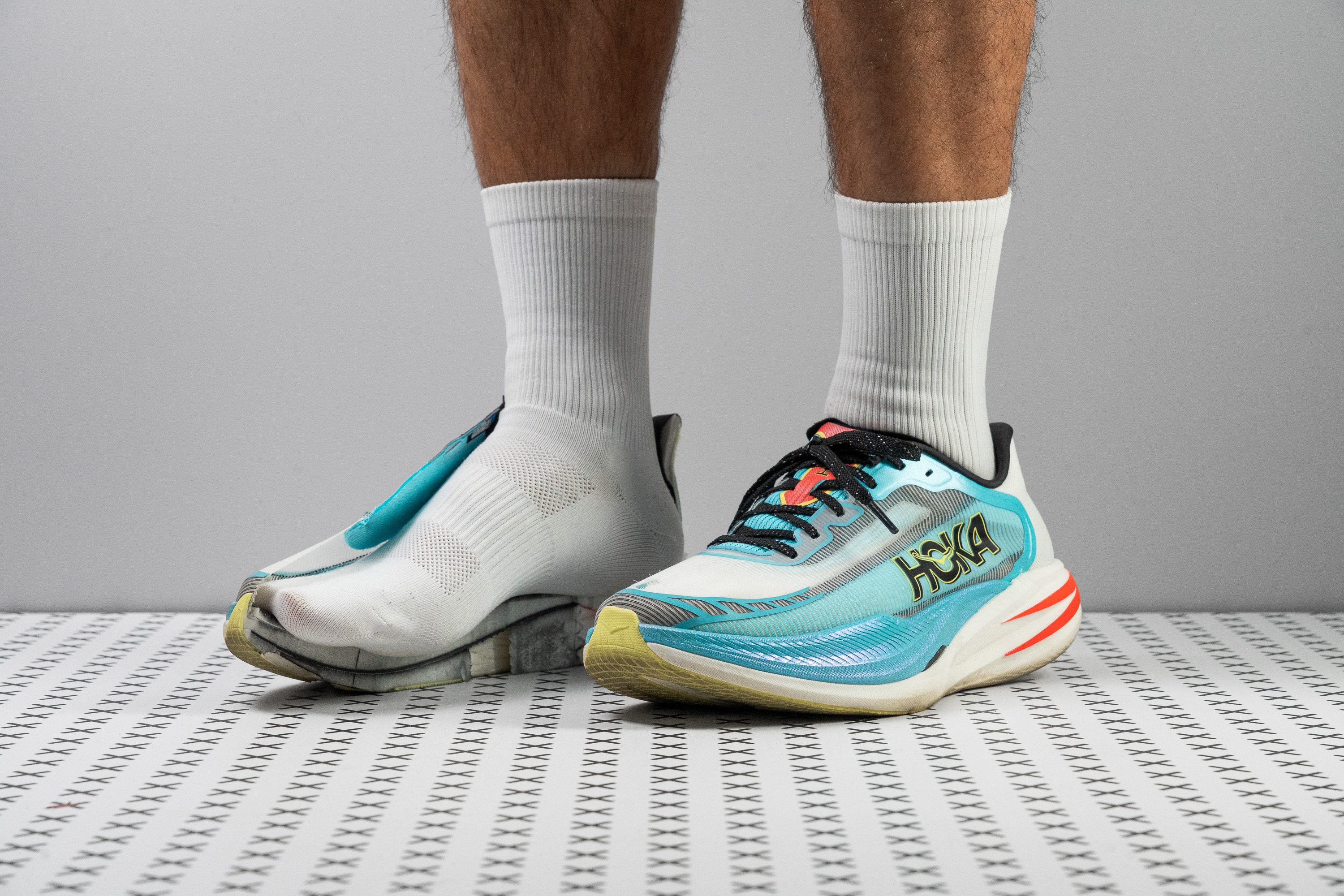Our verdict
- Top pick in best marathon running shoes
- Top pick in best Running shoes for 5K and 10K races
Pros
- Much lighter than v1
- Plush and responsive PEBA foam
- Top-tier breathability
- Forked plate adds heel flex
- Comfort-focused heel padding
- Outsole durability is not a concern
- Improved upper and laces
- Works well from 5K to the marathon
- Premium TPEE insole
Cons
- Pricier than most rivals
- Rocker can feel too aggressive
- Narrow-fitting upper
Audience verdict
- Top 27% in road running shoes
- Top 10% in Hoka running shoes
Comparison
The most similar running shoes compared
+ + Add a shoe | |||||
|---|---|---|---|---|---|
| Audience score | 89 Great! | 91 Superb! | 89 Great! | 92 Superb! | |
| Price | £250 | £270 | £220 | £260 | |
| Pace | CompetitionTempo | Competition | Competition | Competition | |
| Arch support | Neutral | Neutral | Neutral | Neutral | |
| Weight lab Weight brand | 7.3 oz / 208g 7.4 oz / 210g | 7.2 oz / 204g 7.1 oz / 201g | 7.8 oz / 220g 7.4 oz / 210g | 7 oz / 198g 7.5 oz / 213g | |
| Lightweight | ✓ | ✓ | ✓ | ✓ | |
| Drop lab Drop brand | 10.7 mm 7.0 mm | 11.2 mm 8.0 mm | 10.0 mm 7.0 mm | 10.7 mm 8.0 mm | |
| Strike pattern | Heel | Heel | HeelMid/forefoot | Heel | |
| Size | True to size | - | Slightly small | True to size | |
| Midsole softness | Soft | Soft | Soft | Soft | |
| Difference in midsole softness in cold | Big | Small | Small | Small | |
| Toebox durability | Bad | Decent | Decent | Bad | |
| Heel padding durability | Bad | Good | Good | Decent | |
| Outsole durability | Decent | Bad | Good | Decent | |
| Breathability | Breathable | Breathable | Breathable | Moderate | |
| Width / fit | Narrow | Narrow | Narrow | Medium | |
| Toebox width | Medium | Medium | Narrow | Medium | |
| Stiffness | Stiff | Stiff | Stiff | Moderate | |
| Torsional rigidity | Stiff | Stiff | Stiff | Stiff | |
| Heel counter stiffness | Flexible | Flexible | Flexible | Flexible | |
| Plate | Carbon plate | Carbon plate | Carbon plate | Carbon plate | |
| Rocker | ✓ | ✓ | ✓ | ✓ | |
| Heel lab Heel brand | 38.8 mm 46.0 mm | 37.6 mm 40.0 mm | 39.6 mm 40.0 mm | 39.3 mm 40.0 mm | |
| Forefoot lab Forefoot brand | 28.1 mm 39.0 mm | 26.4 mm 32.0 mm | 29.6 mm 33.0 mm | 28.6 mm 32.0 mm | |
| Widths available | Normal | Normal | Normal | NormalWide | |
| Orthotic friendly | ✓ | ✓ | ✓ | ✓ | |
| Season | SummerAll seasons | SummerAll seasons | SummerAll seasons | All seasons | |
| Removable insole | ✓ | ✓ | ✓ | ✓ | |
| Ranking | #90 Top 25% | #29 Top 8% | #102 Top 28% | #12 Top 4% | |
| Popularity | #368 Bottom 1% | #113 Top 31% | #59 Top 16% | #45 Top 13% |
Who should buy
The HOKA Cielo X1 2.0 is a top pick for:
- Runners who enjoyed the first version but were disappointed by its warm upper and heavy build. This update solves both issues.
- Marathoners looking for a supershoe with a bold, crazy rocker—there’s nothing quite like it.
- Midfoot and forefoot strikers who want a cushioned, long-distance performer for both training and racing.
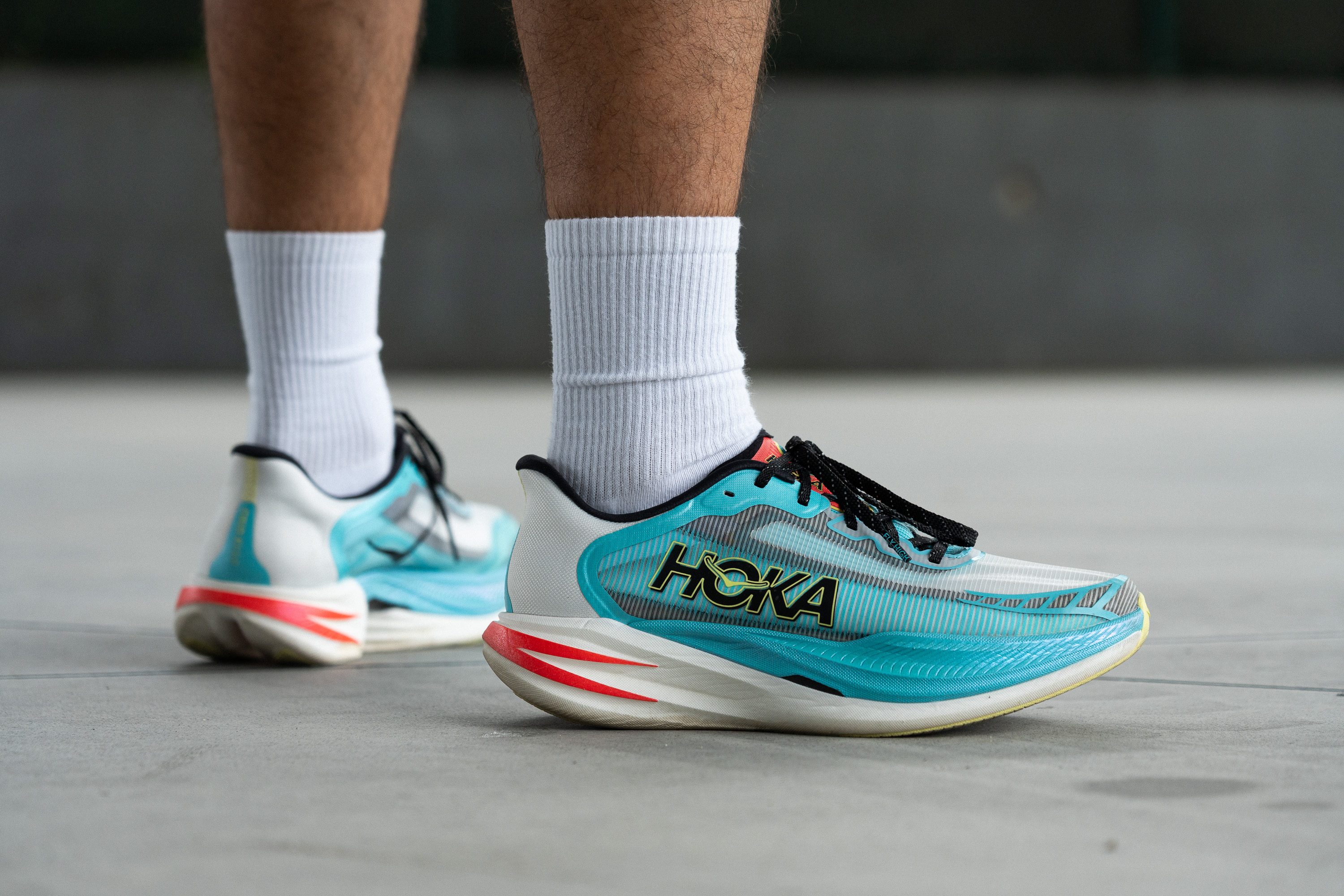
Who should NOT buy
We believe that the Cielo X1 2.0’s ultra-rockered, aggressively-curved midsole won’t appeal to some runners. If you prefer a classic supershoe feel, we suggest the Nike Vaporfly 4 or the Hoka Rocket X 2, which offer a more controlled and balanced ride without sacrificing performance.
We’re also convinced that the narrow-fit upper limits this shoe’s versatility. According to our measurements, it’s not ideal for runners who need a bit more room. For a more comfortable supershoe with a PEBA midsole, we recommend the New Balance FuelCell SuperComp Elite v4.

Cushioning
Shock absorption
The first edition of the Cielo X1 was already ultra-cushioned and springy, but HOKA somehow managed to level it up again.
It now delivers a jaw-dropping 160 SA in the heel, making it the top supershoe for heavyweight rearfoot strikers. Up front, it’s more average at 108 SA, yet still solid enough for marathon distances.
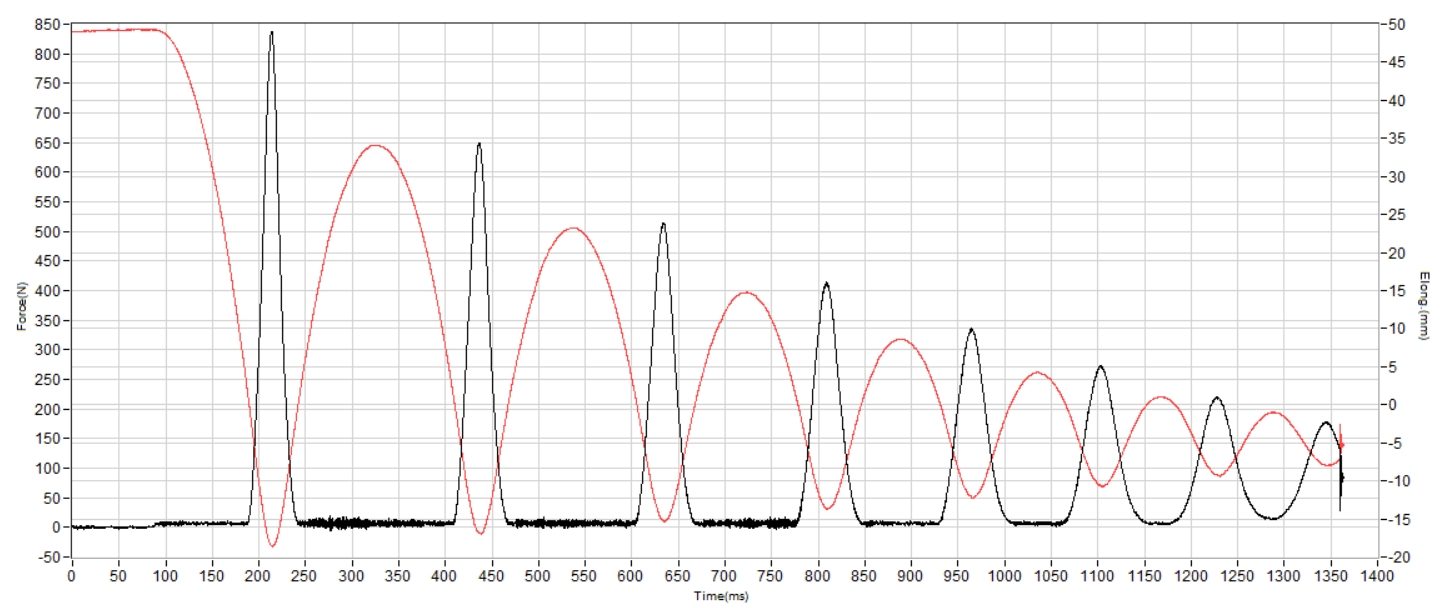
| Cielo X1 2.0 | 160 SA |
| Average | 130 SA |
Energy return
Energy return got a slight upgrade too, putting it dangerously close to the best performers of the year. We measured state-of-the-art numbers: 75.9% in the heel and an eye-popping 78.4% in the forefoot thanks to its PEBA foam.
And yet, HOKA still refuses to put on a flashy name for this foam like... ProflyUltraMax+!
| Cielo X1 2.0 | 75.9% |
| Average | 58.7% |
Heel stack
HOKA claims the Cielo X1 has over 40 mm in the heel, yet also says it follows World Athletics rules that cap stack height at that limit. How is that possible?
We discovered the brand isn’t measuring at the official point set by World Athletics. Instead, it uses the same loophole Mizuno used in the Wave Rebellion Pro 2—curving the heel in a dramatic way so the measuring spot stays just under 40 mm, while the midfoot packs extra-thick cushioning above that. And it works!
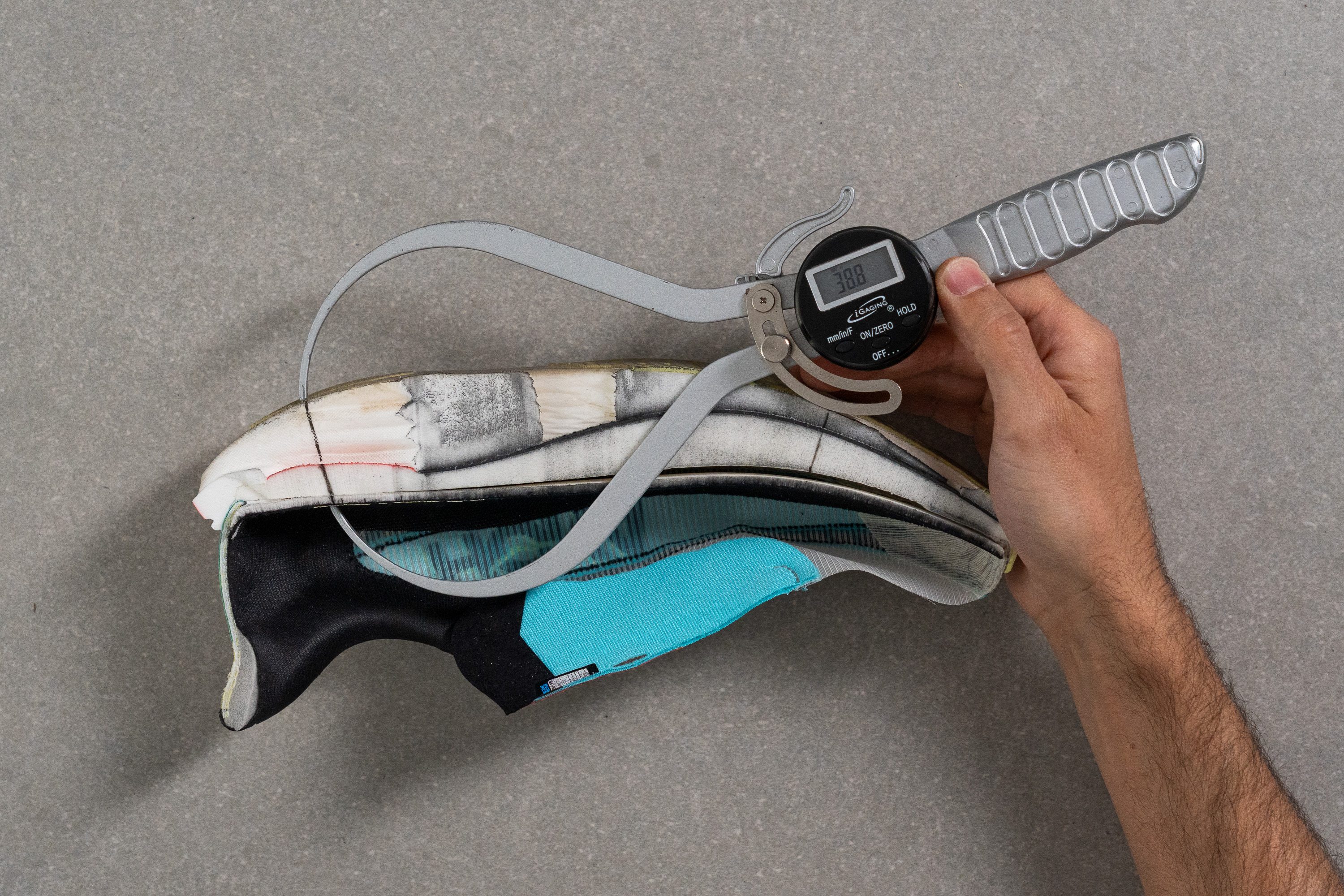
| Cielo X1 2.0 | 38.8 mm |
| Average | 34.8 mm |
Forefoot stack
The forefoot also has an extreme curvature (we’ll get into the rocker details in a minute) and because of that, the forefoot stack isn’t massive. At 28.1 mm, it offers enough cushioning for a marathon, though heavier forefoot strikers might prefer something above 30 mm.
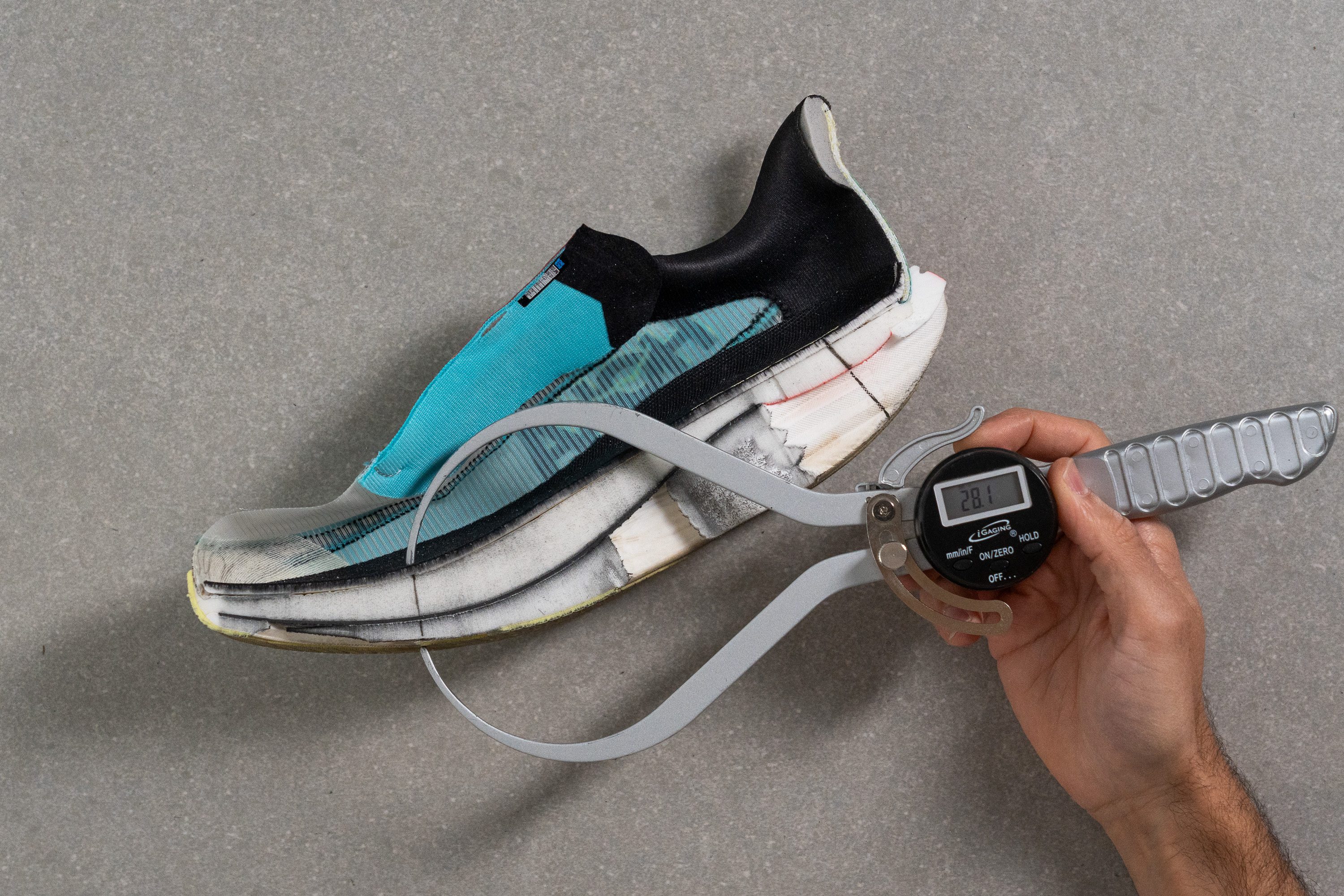
| Cielo X1 2.0 | 28.1 mm |
| Average | 26.2 mm |
Drop
The rockered shape of the Cielo X1 2.0 results in a true 10.7 mm heel-to-toe drop when measured at the official points defined by World Athletics. Still, the ride feels quite different from other high-drop shoes due to the aggressive curvature.
For us, unless you land on the heel, it runs more like a 5 mm drop shoe—making it a better fit for midfoot and forefoot strikers.
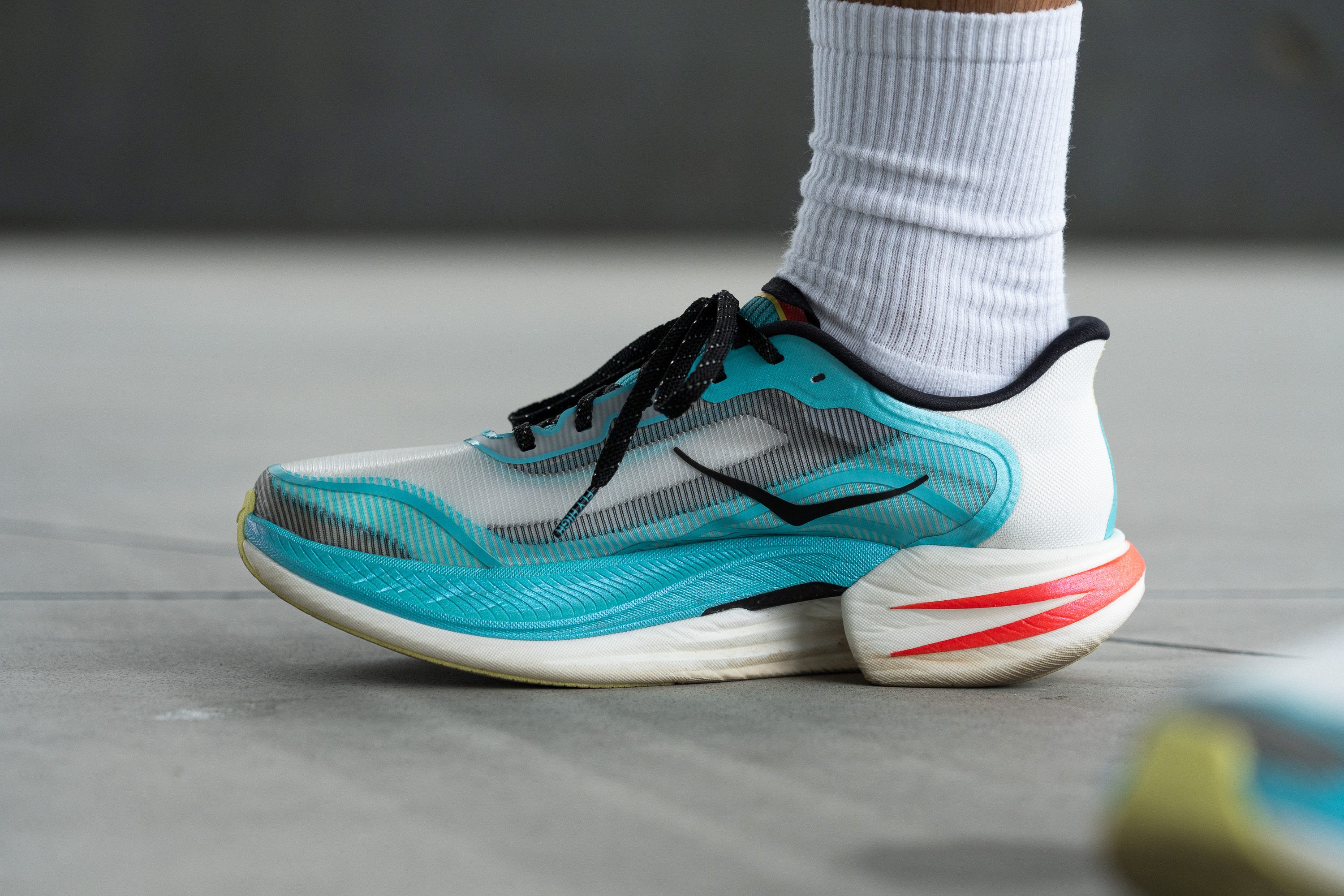
| Cielo X1 2.0 | 10.7 mm |
| Average | 8.7 mm |
Midsole softness
The HOKA Cielo X1 2.0 features a supercritical PEBA foam that feels very close to Nike’s ZoomX, and it delivers the top performance you'd expect from a supershoe. We tested it thoroughly—no complaints from our side.
But how does it feel? HOKA stayed true to the plush-and-responsive vibe of the previous generation, and it definitely lands on the softer side at 13.0 HA. It’s a comfort-loaded option for runners who enjoy that sink-in sensation paired with high-energy rebound.
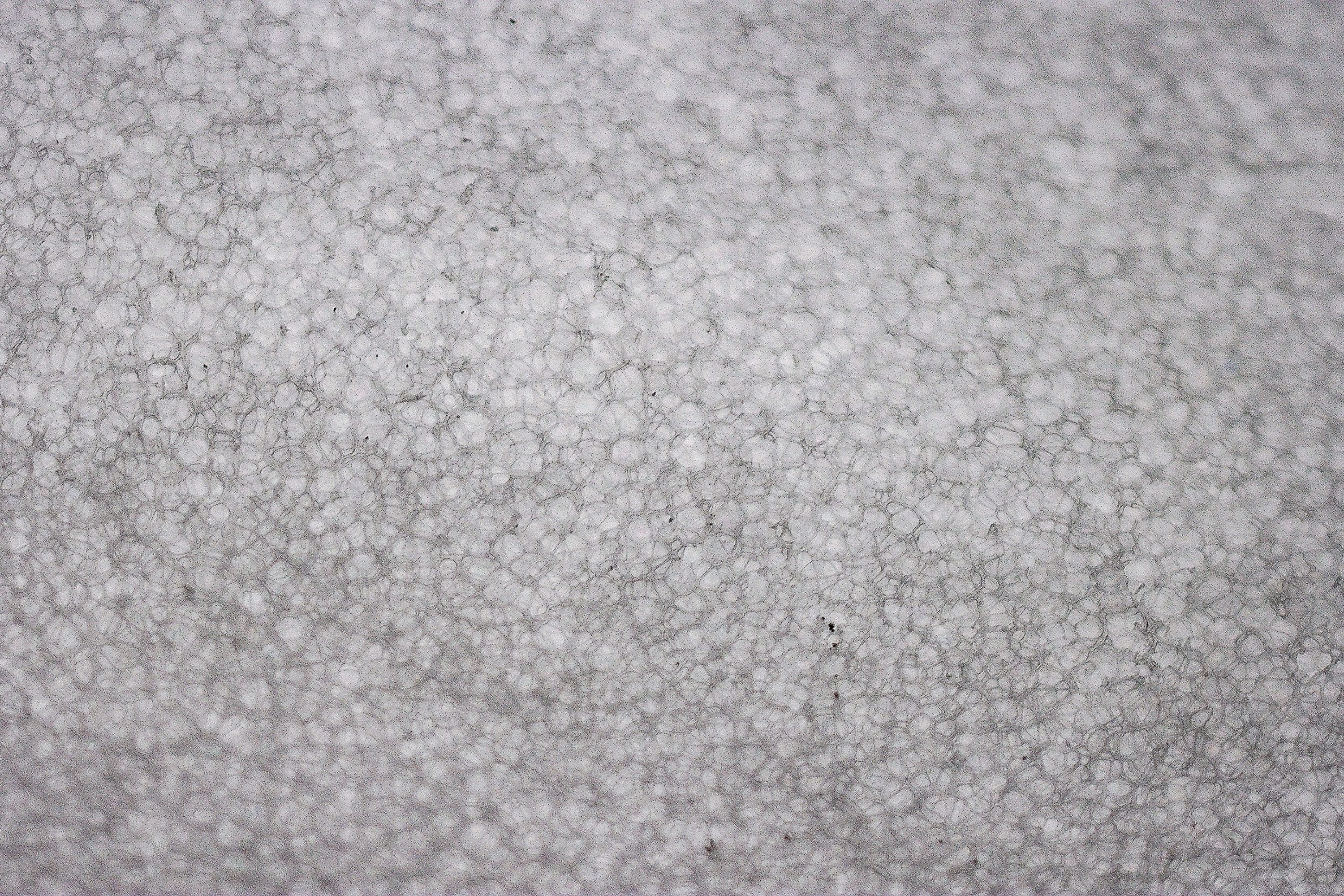
To verify that it's supercritical PEBA, we cut a small piece of the foam and looked at it under the microscope.
We found a tight, micro-beaded pattern that's classic for supercritical foams. The small, round cells are packed closely together, which means the material is very light, expands well, and gives strong energy return without adding extra weight.
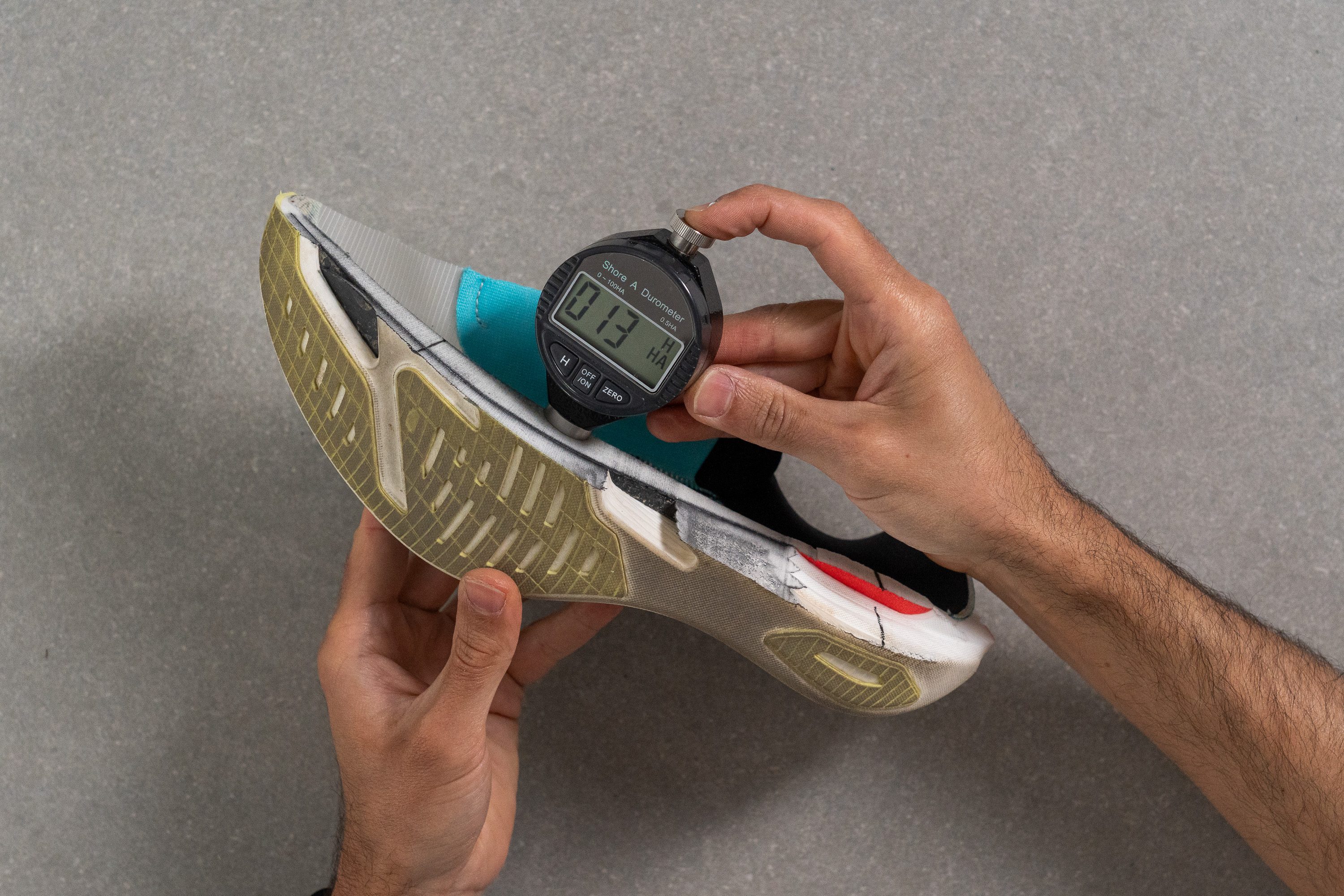
| Cielo X1 2.0 | 13.0 HA |
| Average | 20.4 HA |
Secondary foam softness
The Cielo X1 2.0 sticks to the classic supershoe formula: two foam layers with a stiff carbon plate sandwiched in between. Using our durometer, we found the bottom layer, closer to the ground, measured 13.5 HA. Well, that's nearly identical to the top one, so both feel equally soft and bouncy.
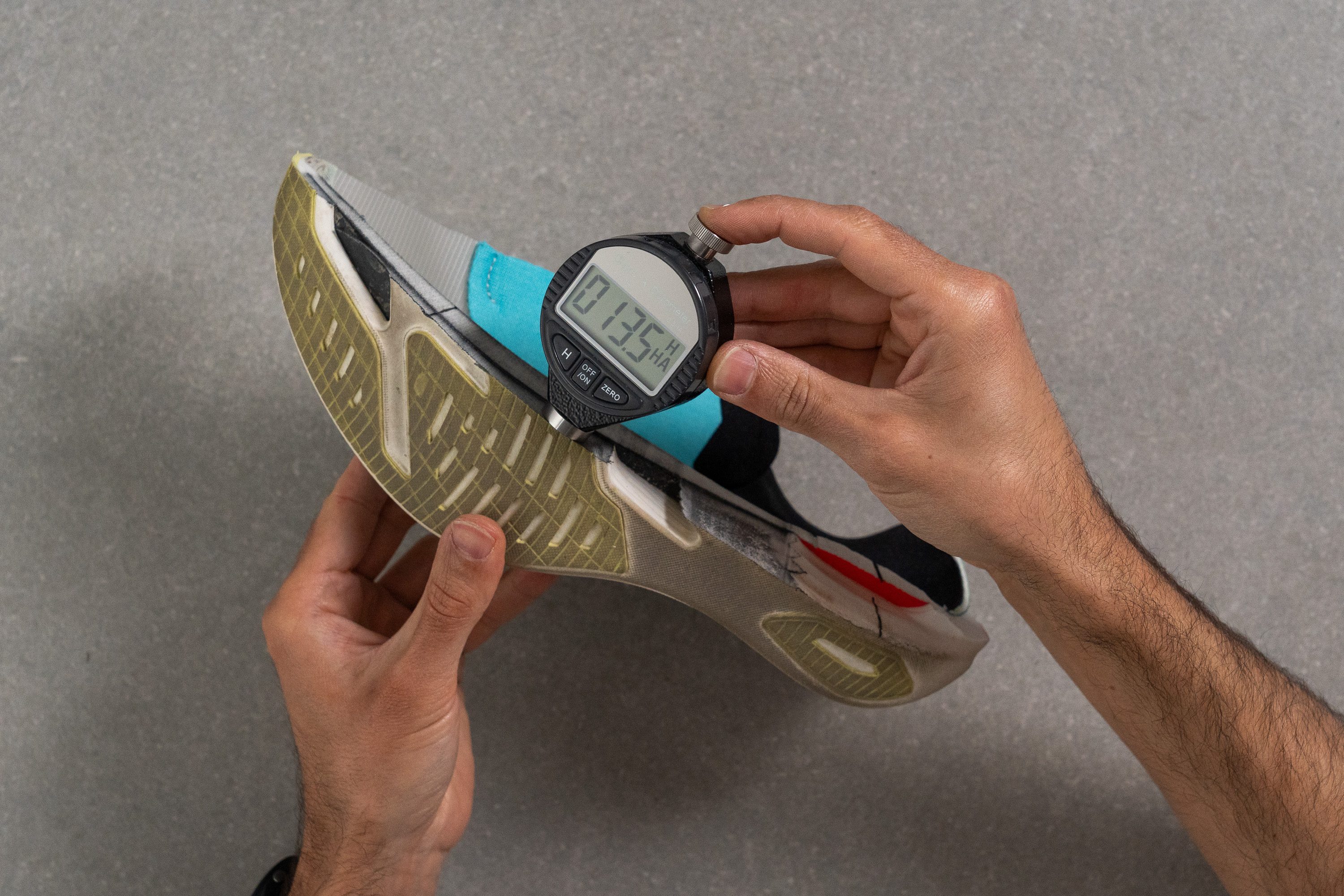
| Cielo X1 2.0 | 13.5 HA |
| Average | 22.6 HA |
Rocker
The Cielo X1 2.0 carries on its legacy with a massive rocker. As shown in our side photo, we discovered the heel’s curvature is bold and forward-driving, helping most runners with turnover no matter their footstrike.
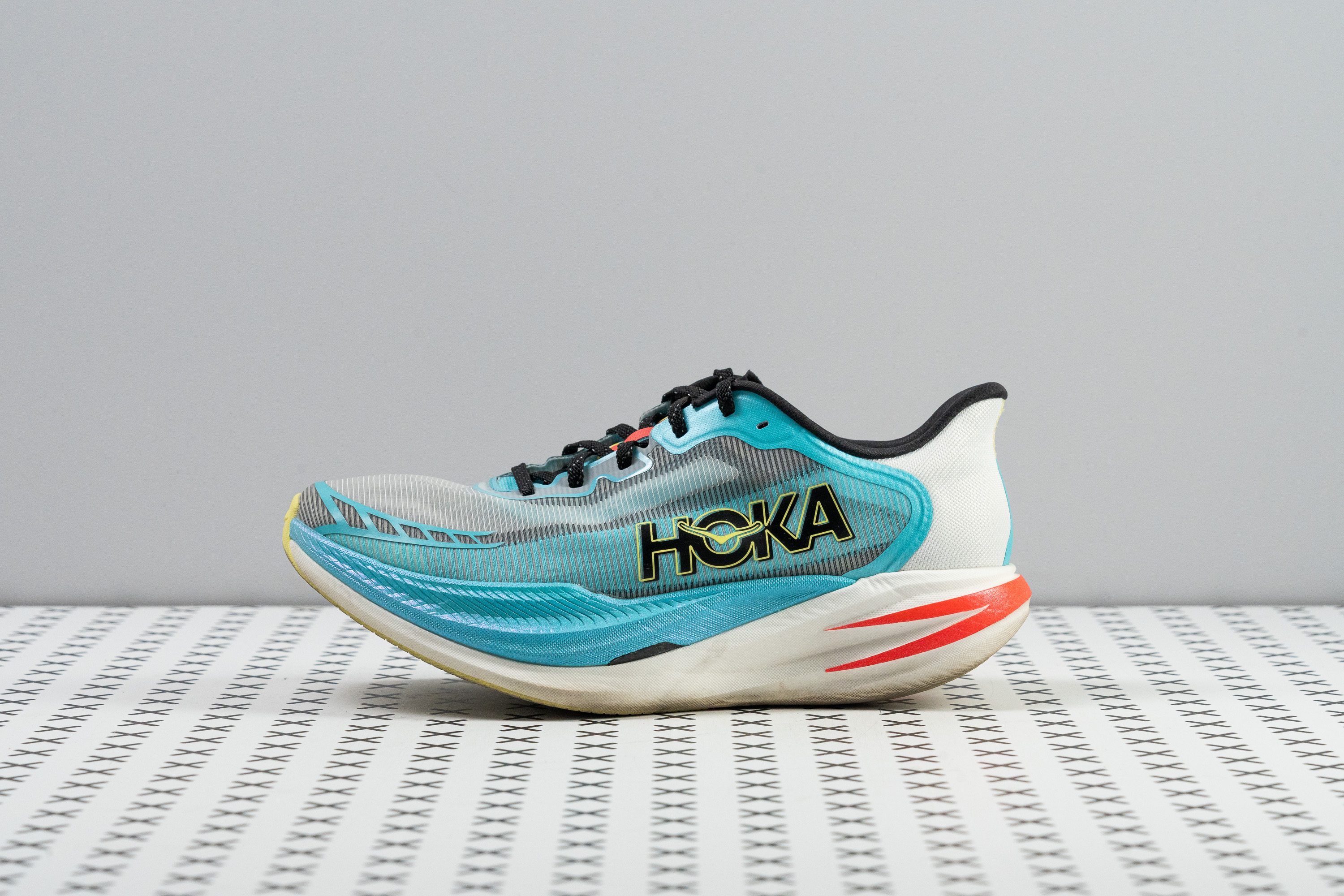
In the forefoot, we found what HOKA labels an "Early-Stage" Meta-Rocker, which begins really early and climbs dramatically—creating a ride that suits runners who enjoy aggressive midsoles.
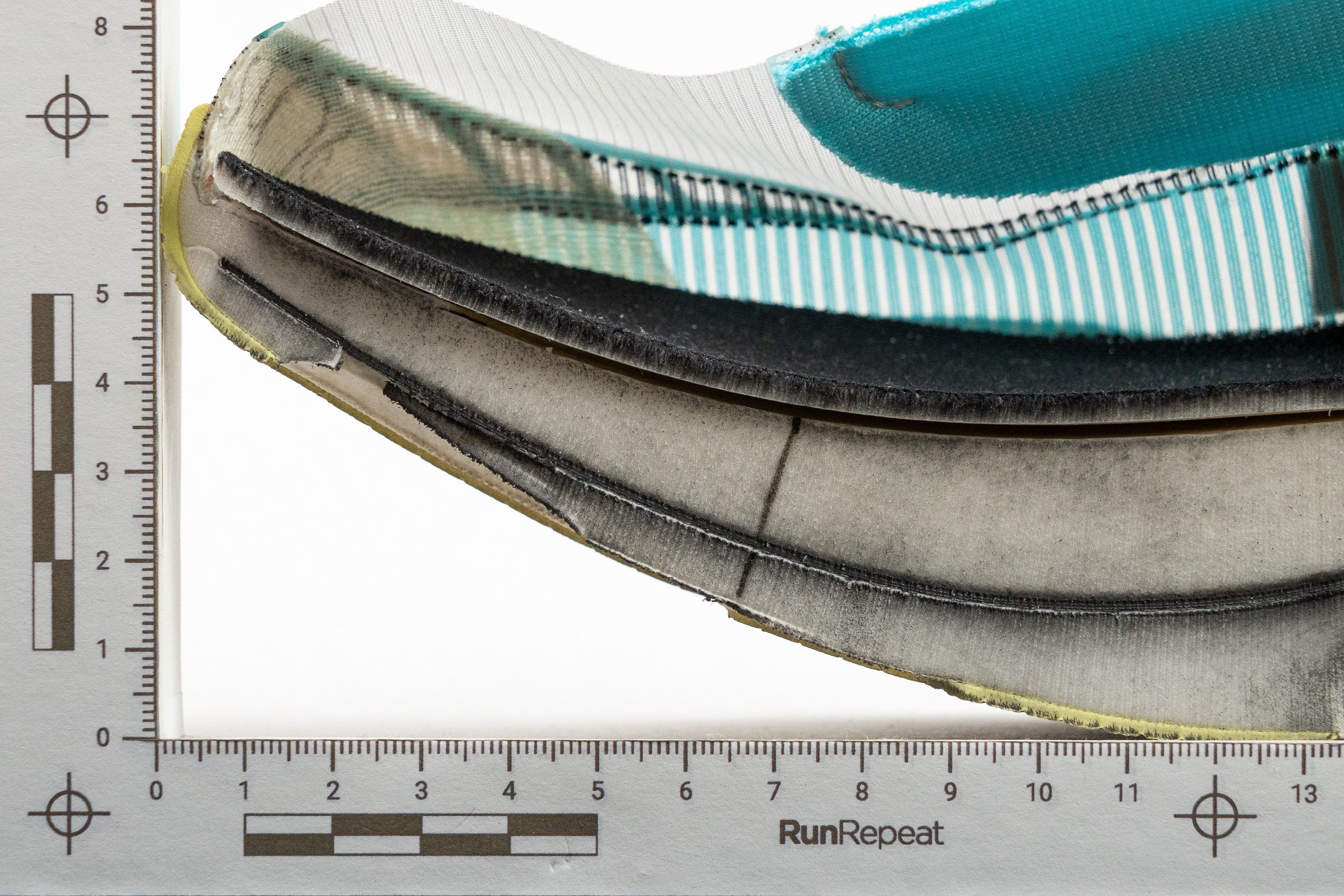
Plate
The Cielo X1 2.0 features a full-length carbon plate that’s not like the average one found in most supershoes.
You might think from our photo that it ends in the midfoot, but that’s because we cut the shoe right at the centre and we found that the plate actually forks in the heel, adding a touch of extra flexibility in that zone. But rest assured, it goes from heel to toe like in most supershoes.
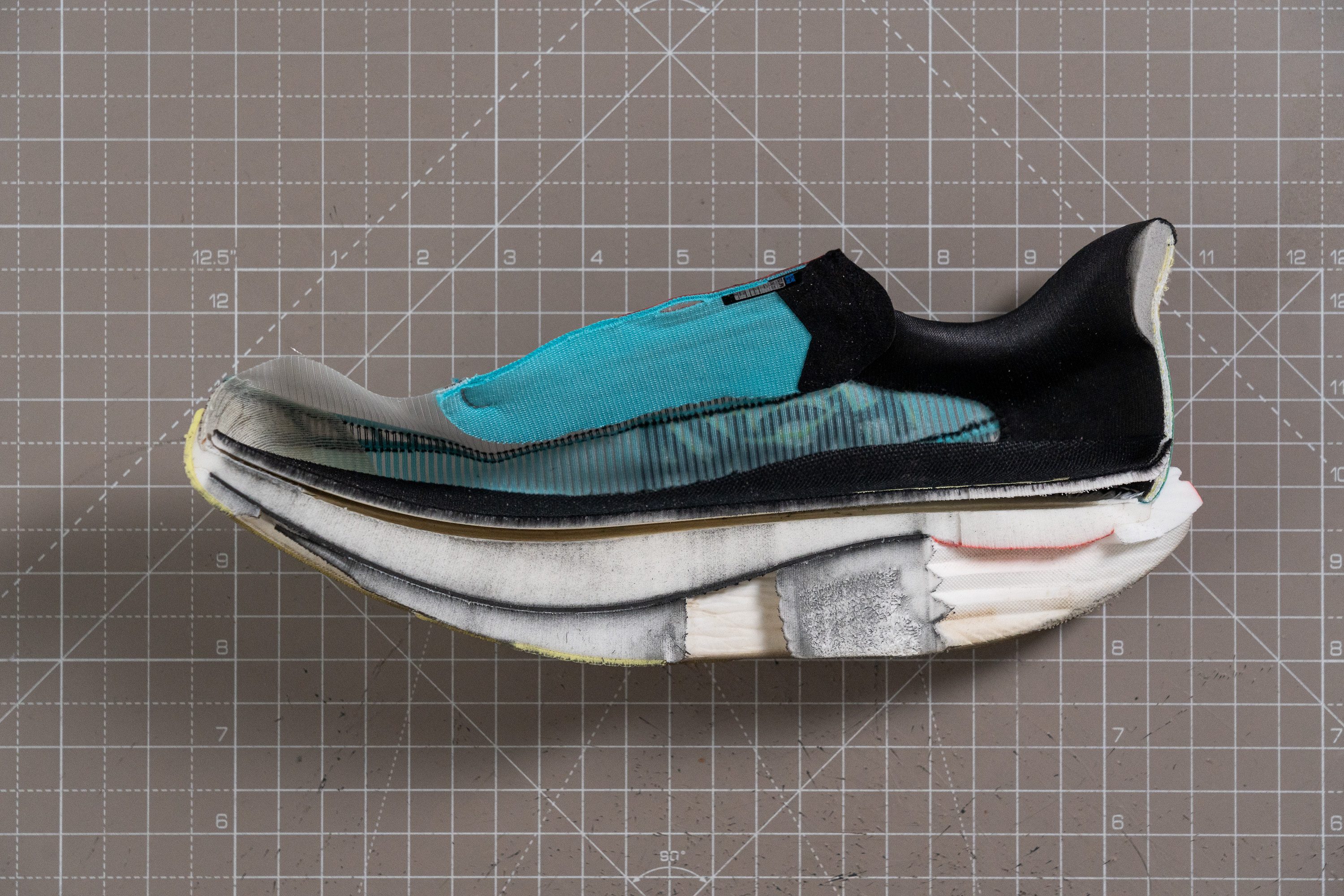
Size and fit
Size
HOKA Cielo X1 2.0 fits true to size (24 votes).
Width / Fit
From our first run, we noticed the Cielo X1 2.0 doesn’t suit wide-footed runners well.
To understand why, we created a gel mould of the shoe's interiors and discovered the fit issue. At just 90.6 mm, it’s far from wide—only those who enjoy a snug feel or have naturally narrow feet will get comfort using this supershoe.
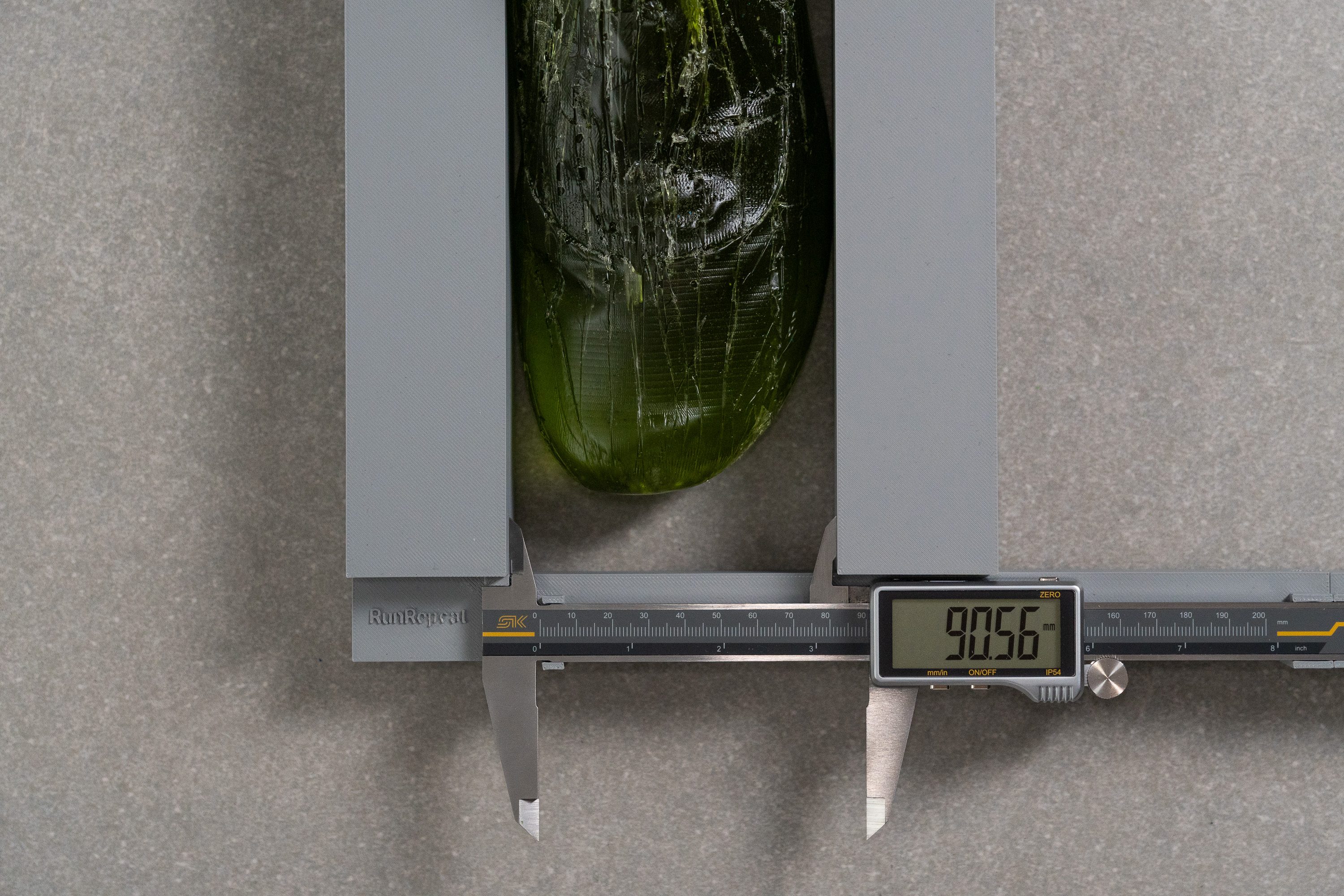
| Cielo X1 2.0 | 90.6 mm |
| Average | 95.1 mm |
Toebox width
The toebox width is also narrower than the average at 71.3 mm. That's why we still stand by our recommendation about who the Cielo X1 2.0 is best suited for.
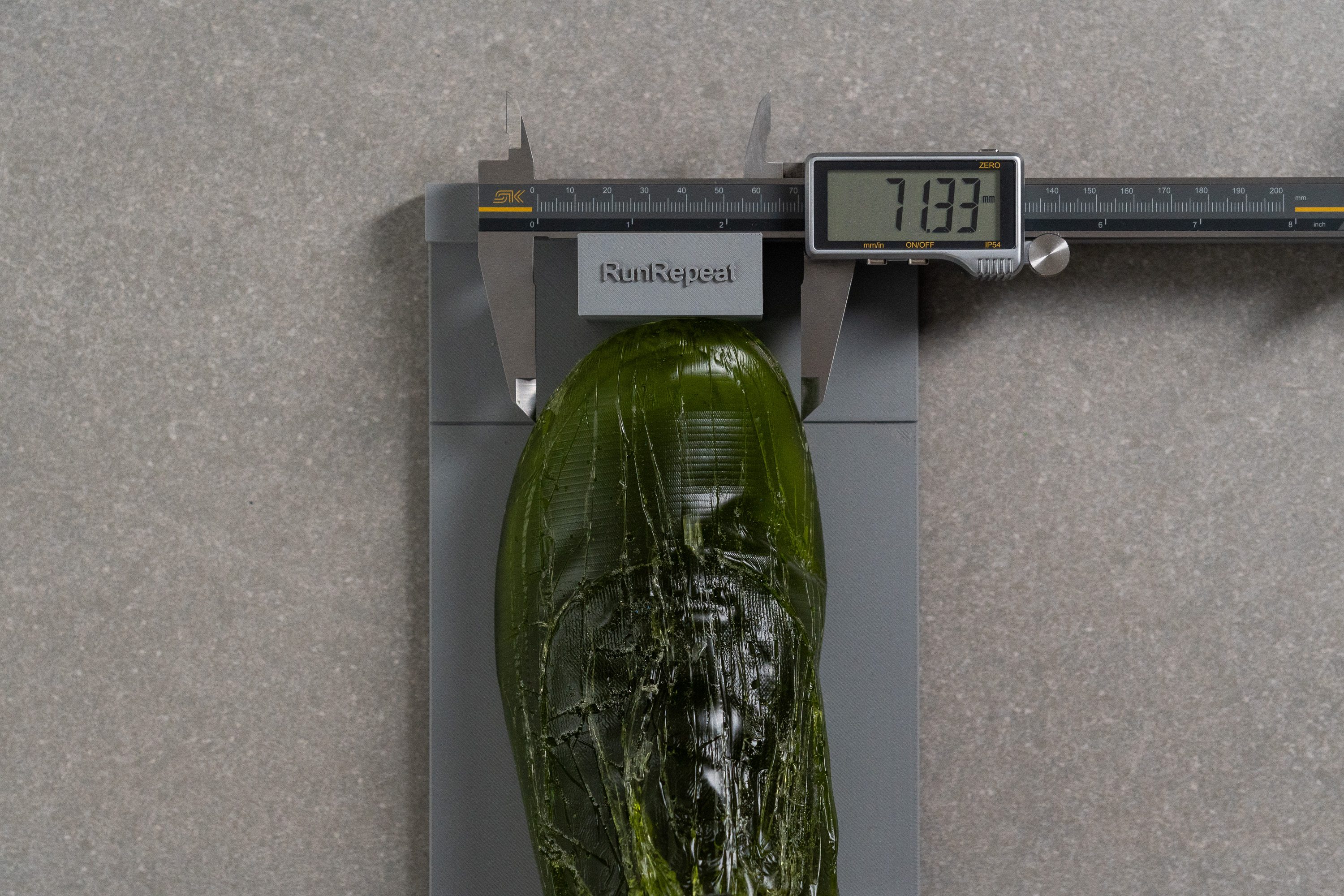
| Cielo X1 2.0 | 71.3 mm |
| Average | 73.2 mm |
Toebox height
The height of the toebox is also lower than average at 26.3 mm, but we think this is a good result for everyone.
Since this is a speedy shoe, you don’t want your toes floating around, and this secure-feeling design keeps them in place.
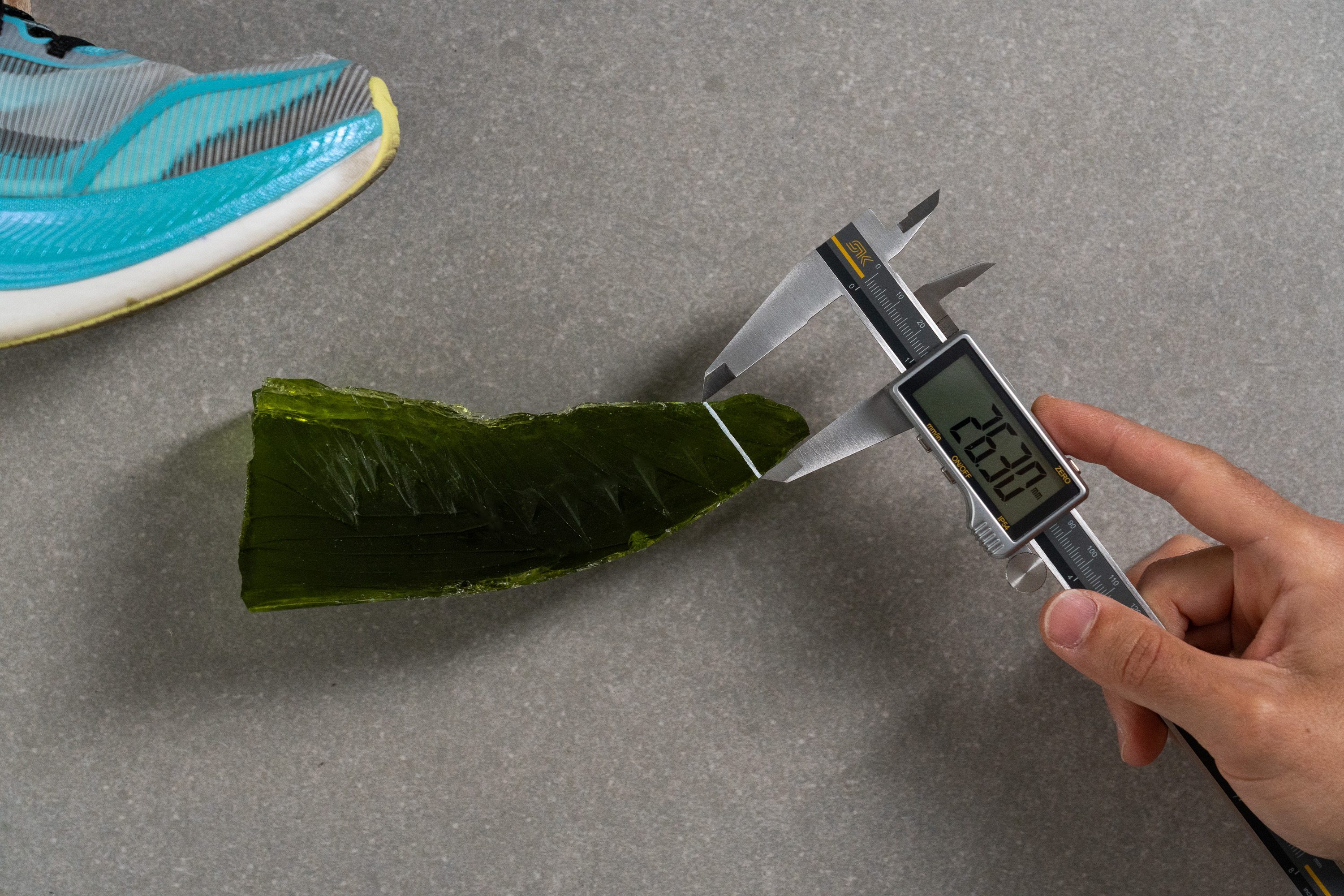
| Cielo X1 2.0 | 26.3 mm |
| Average | 27.1 mm |
Traction / Grip
Traction test
The Cielo X1 2.0 might not be the most grippy supershoe, earning a score of 0.39 under our SATRA TM144 test. However, it provides adequate traction for most runners. It offers excellent grip in dry conditions and performs reasonably well in wet races.
That said, if grip in wet conditions is a significant concern for you, consider choosing the ASICS Metaspeed Sky Paris instead.
| Cielo X1 2.0 | 0.39 |
| Average | 0.48 |
Outsole design
This outsole is built for speed. The large cutout through the middle boosts flexibility and trims down weight. Rubber is placed only in key zones, delivering grip where it counts without weighing the shoe down, though rubber coverage is actually quite a generous for a supershoe.
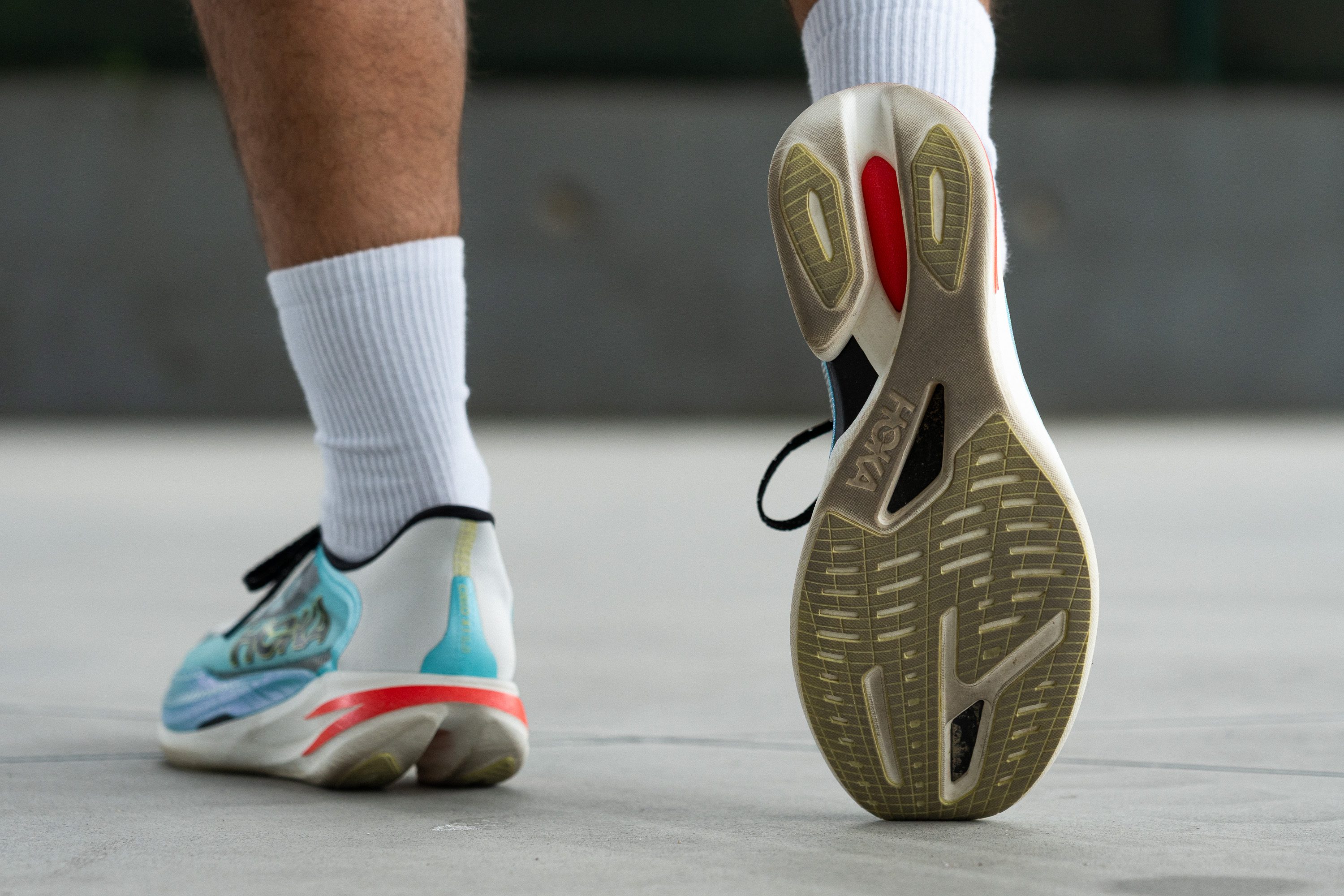
Flexibility / Stiffness
Like most carbon-plated supershoes, the Cielo X1 2.0 scored above average in our flexibility test. We bent it to 30 degrees like we do with every shoe, and measured a stiffness of 19.4N.
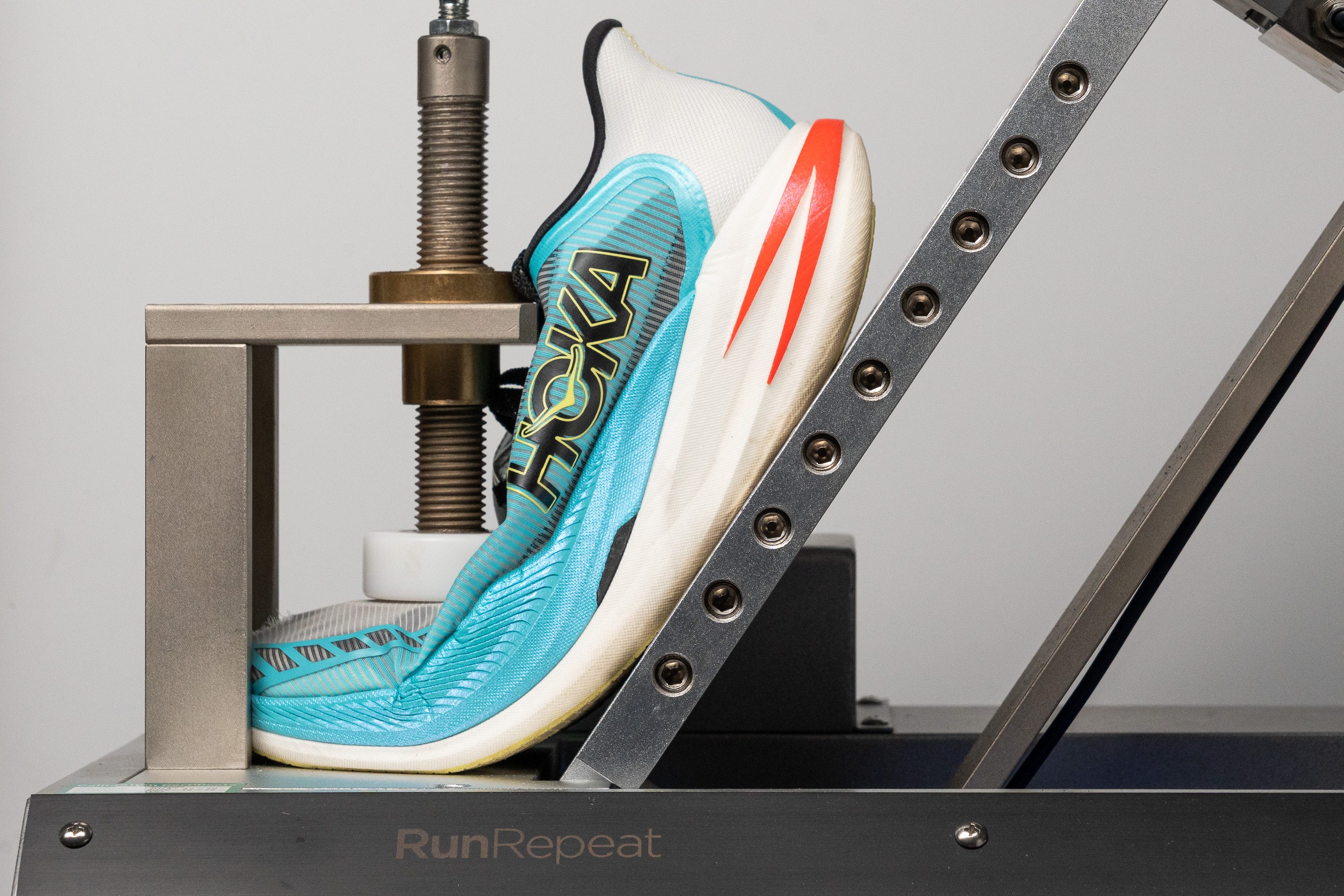
| Cielo X1 2.0 | 19.4N |
| Average | 15.3N |
Weight
The main issue of the first-generation Cielo X1 was its high weight. At 8.8 oz or 249g, it was too heavy to be considered a world-class supershoe, even though it performed well for runners not focused on this aspect or those simply looking for a premium long-run option.
However, HOKA understood this was the top complaint about v1, and they addressed it. This second version radically redesigned the upper and fine-tuned the midsole to make it lighter, and we tested it at just 7.3 oz or 208g.
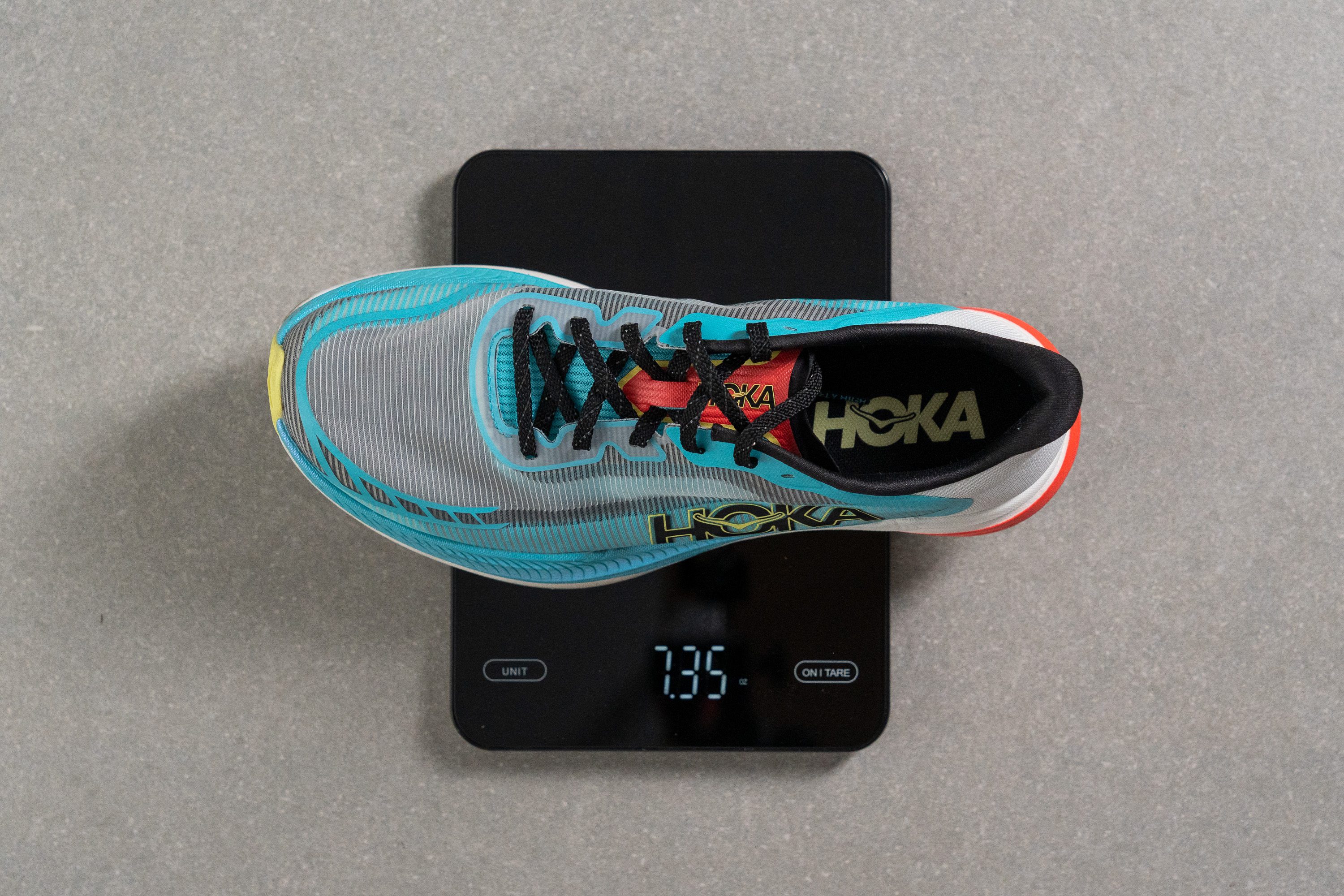
| Cielo X1 2.0 | 7.3 oz (208g) |
| Average | 9.3 oz (264g) |
Breathability
The upper of the original Cielo X1 sparked debate with its corduroy-like texture and almost no airflow, so it was clear a full redesign was coming.
We found that HOKA replaced it with an engineered mesh that feels feather-light and offers impressive airflow. During our smoke-pumping test, the smoke escaped with zero resistance, leading us to rate it a top 5 out of 5.
To confirm, we moved the upper over a powerful light source and noticed almost no material blocking the toebox or the midfoot. However, the tongue and heel sections are thicker and denser.
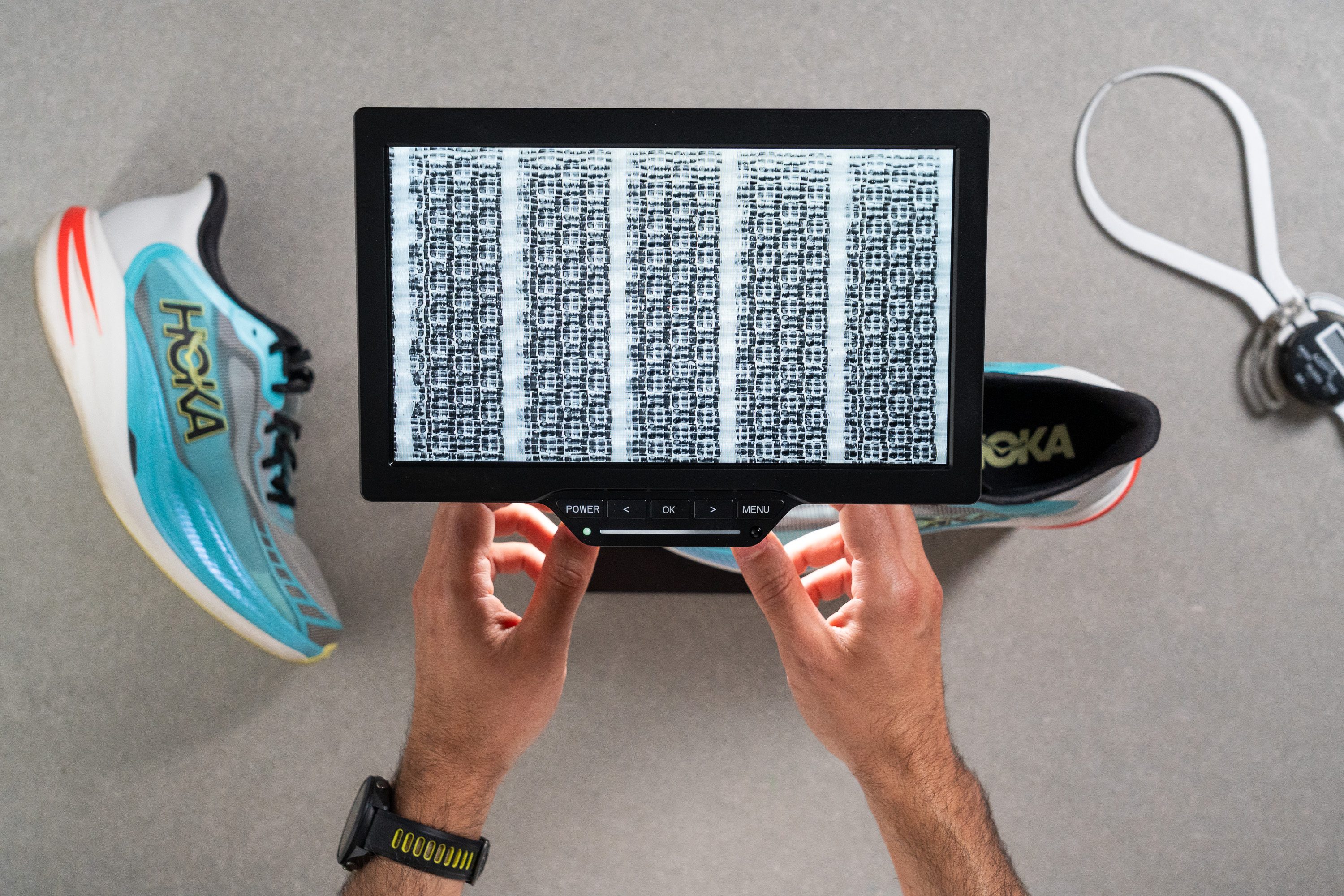
Under our microscope, the material stood out as one of the most precision-built uppers we’ve ever examined.
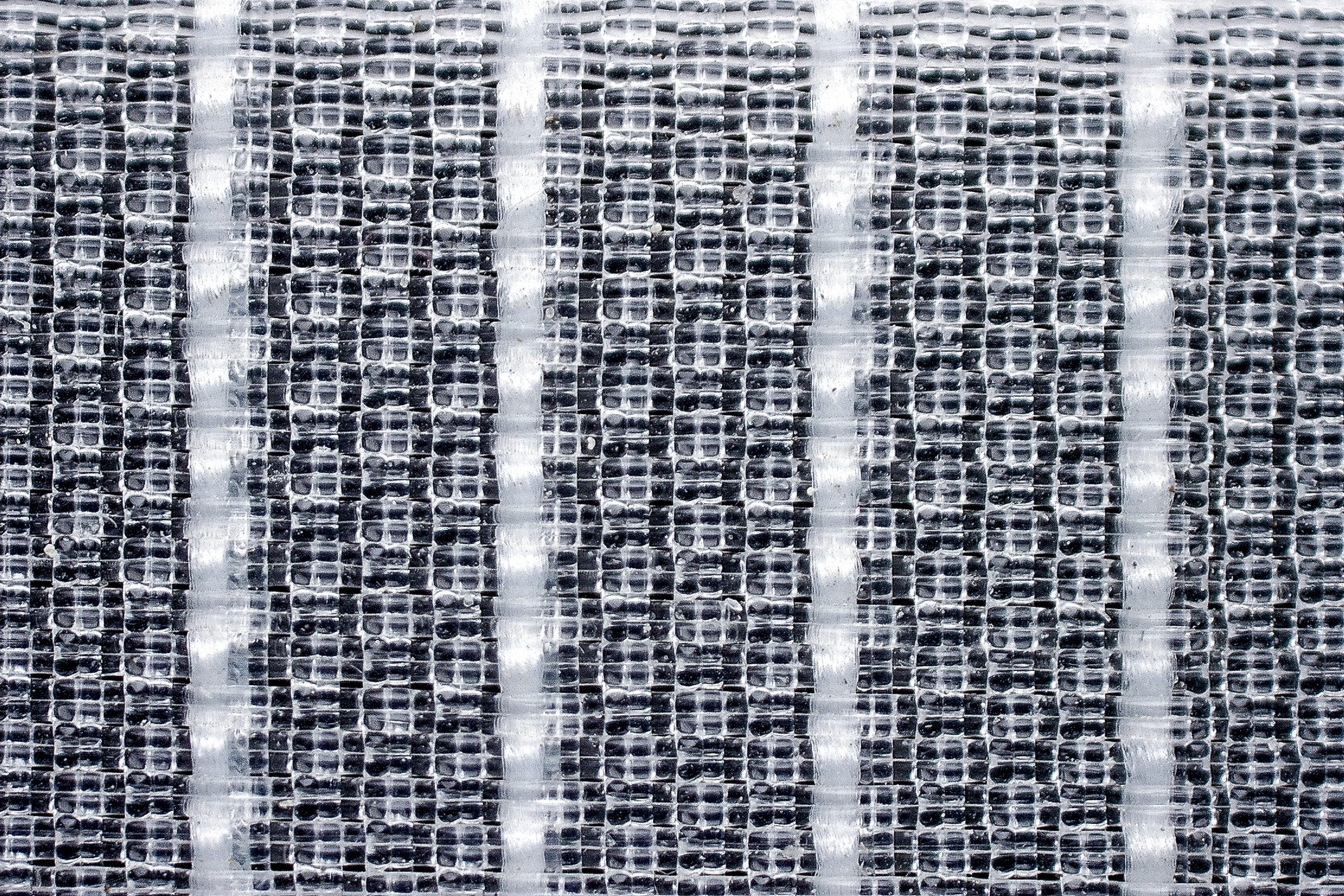
It’s filled with ultra-tiny ventilation spots that create a breathable feel without relying on large visible holes.
We also discovered thin TPU overlays for added support and were surprised by the pillow-soft padding around the heel—making this one of the few supershoes with a genuinely comfort-driven rearfoot.
| Cielo X1 2.0 | 5 |
| Average | 3.7 |
Stability
Lateral stability test
The Cielo X1 2.0 isn’t what we’d call a stable shoe—especially for heel strikers. HOKA tried to balance things out with features like the Active Foot Frame technology in the forefoot and guidance-ready cutouts through the heel and midfoot.
Still, we tested it and found it only suited for neutral runners who don't demand a stable ride. If you’re looking for a more stability-focused supershoe, the Nike Alphafly 3 is a better pick.
Torsional rigidity
Despite having a full-length carbon plate in the midsole, the Cielo X1 2.0 feels less rigid than many other supershoes thanks to the forked design of the plate. That’s why we rated it 4 out of 5.
| Cielo X1 2.0 | 4 |
| Average | 3.5 |
Heel counter stiffness
The heel counter offered very little resistance when we tried to bend it, earning a 2/5 score. This matches most race-ready designs and didn’t come as a surprise during our testing.
| Cielo X1 2.0 | 2 |
| Average | 2.9 |
Midsole width - forefoot
This shoe performs especially well for forefoot strikers thanks to its aggressive rocker and broad landing zone up front, which we measured at 116.7 mm. While that may not sound huge compared to an average trainer, let’s not forget that this is a race-built shoe, not a daily workhorse.
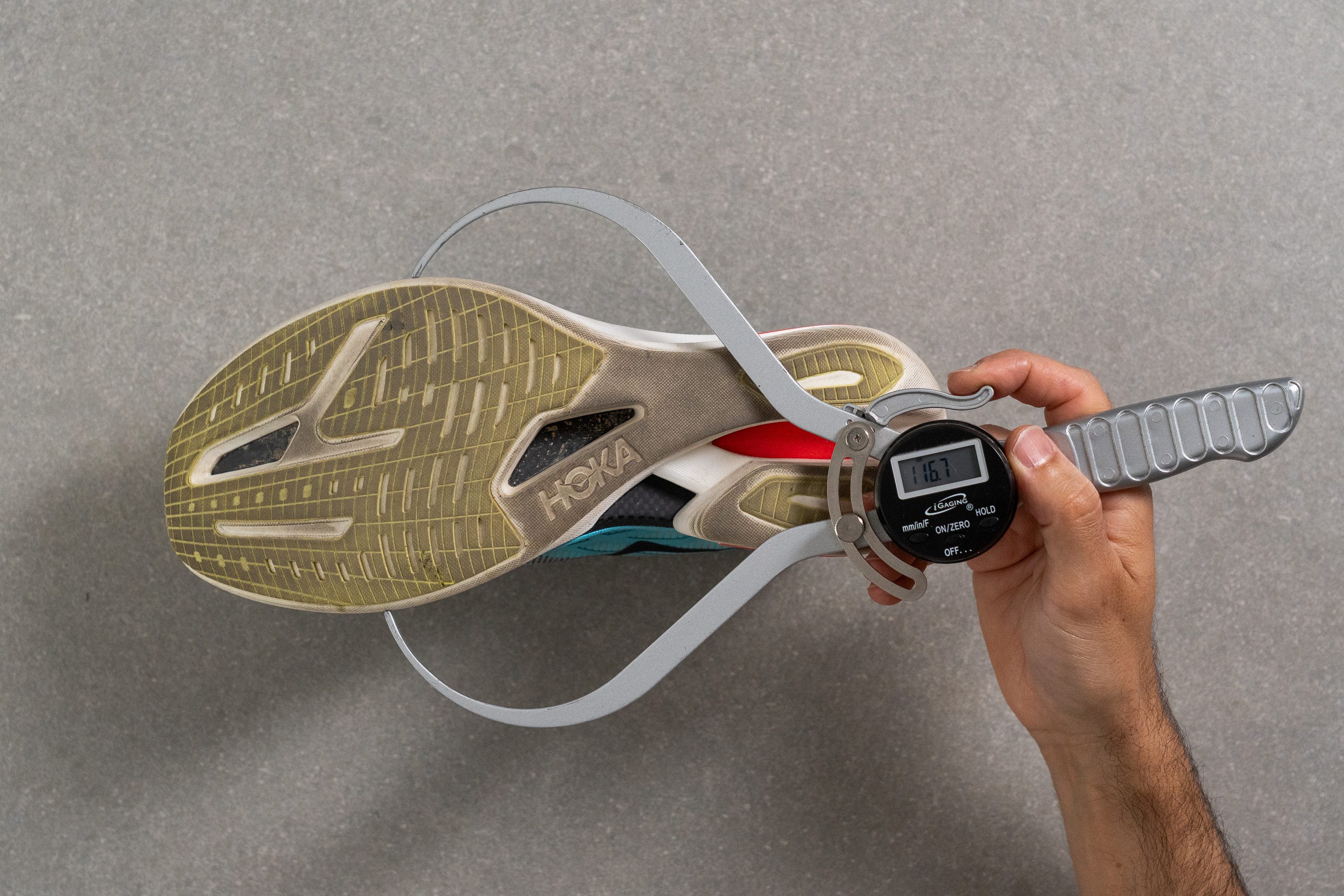
| Cielo X1 2.0 | 116.7 mm |
| Average | 114.3 mm |
Midsole width - heel
HOKA has streamlined the Cielo X1 2.0 compared to its predecessor, and that’s clear in the more compact heel. It now measures just 80.6 mm—down from 89.7 mm in v1—which helps reduce weight and boost agility, though it results in a less stable rearfoot zone.
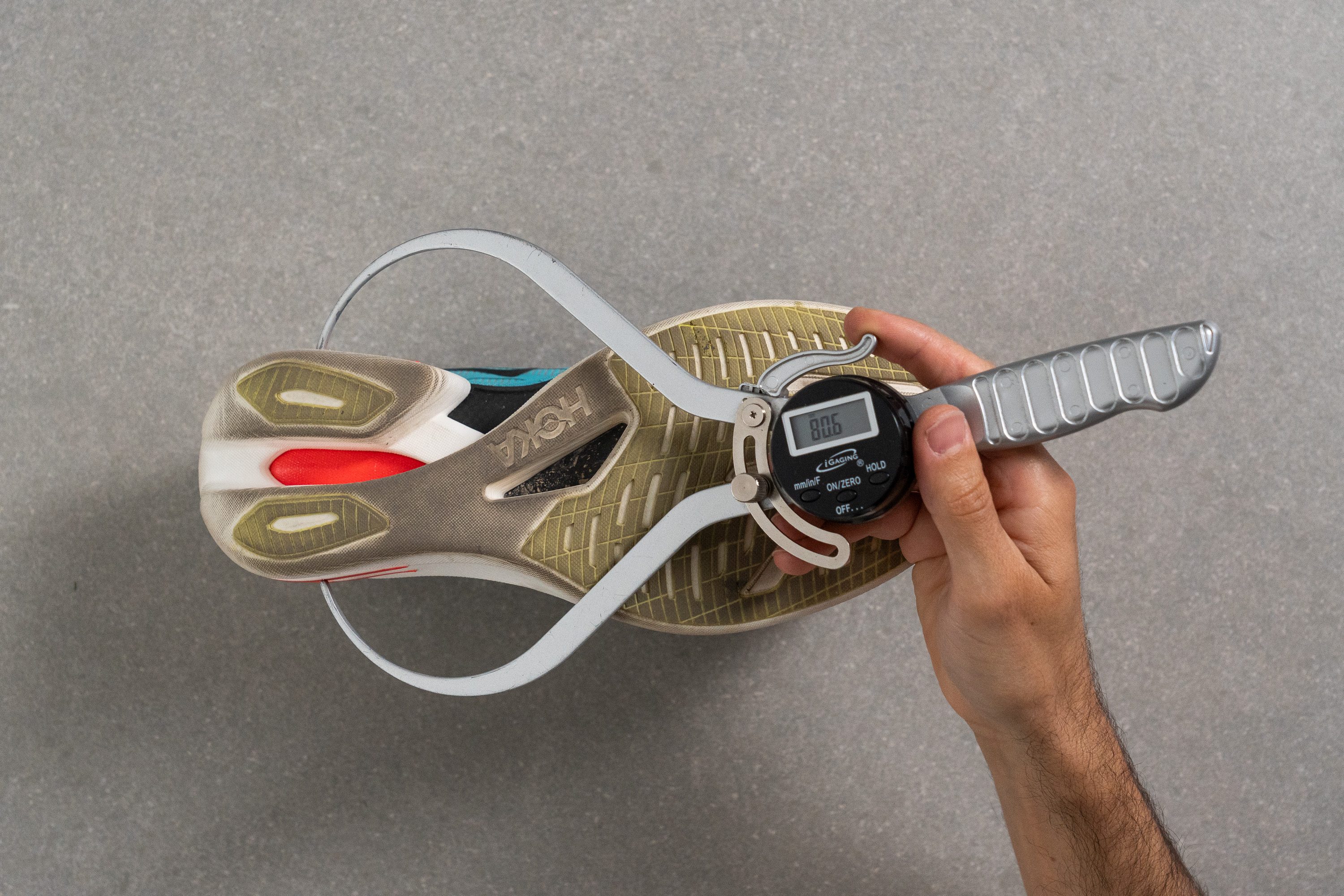
| Cielo X1 2.0 | 80.6 mm |
| Average | 90.7 mm |
Durability
Toebox durability
The toebox is incredibly thin, which became obvious during our test using the plastic support piece to hold the upper in place. So it wasn’t surprising that it offered almost no resistance, earning a weak 1/5 in our initial durability test.
| Cielo X1 2.0 | 1 |
| Average | 2.6 |
Heel padding durability
While the toebox didn’t raise much concern, the heel was a bit more troubling. It scored another 1/5, but this time in a zone that typically experiences more wear during regular use.
| Cielo X1 2.0 | 1 |
| Average | 3.4 |
Outsole durability
We also tested the outsole’s durability using our Dremel and measured 1.1 mm of damage after lifting the tool and checking with our tyre tread gauge.
That’s a strong result for a supershoe, as these models often rely on softer, grip-focused rubber that wears down quickly, but the Cielo X1 2.0 held up surprisingly well in this test.
| Cielo X1 2.0 | 1.1 mm |
| Average | 1.1 mm |
Outsole thickness
2.3 mm may be below average compared to all shoes, but it’s fairly generous for a supershoe. There’s definitely some space here for weight-cutting improvements in future versions.
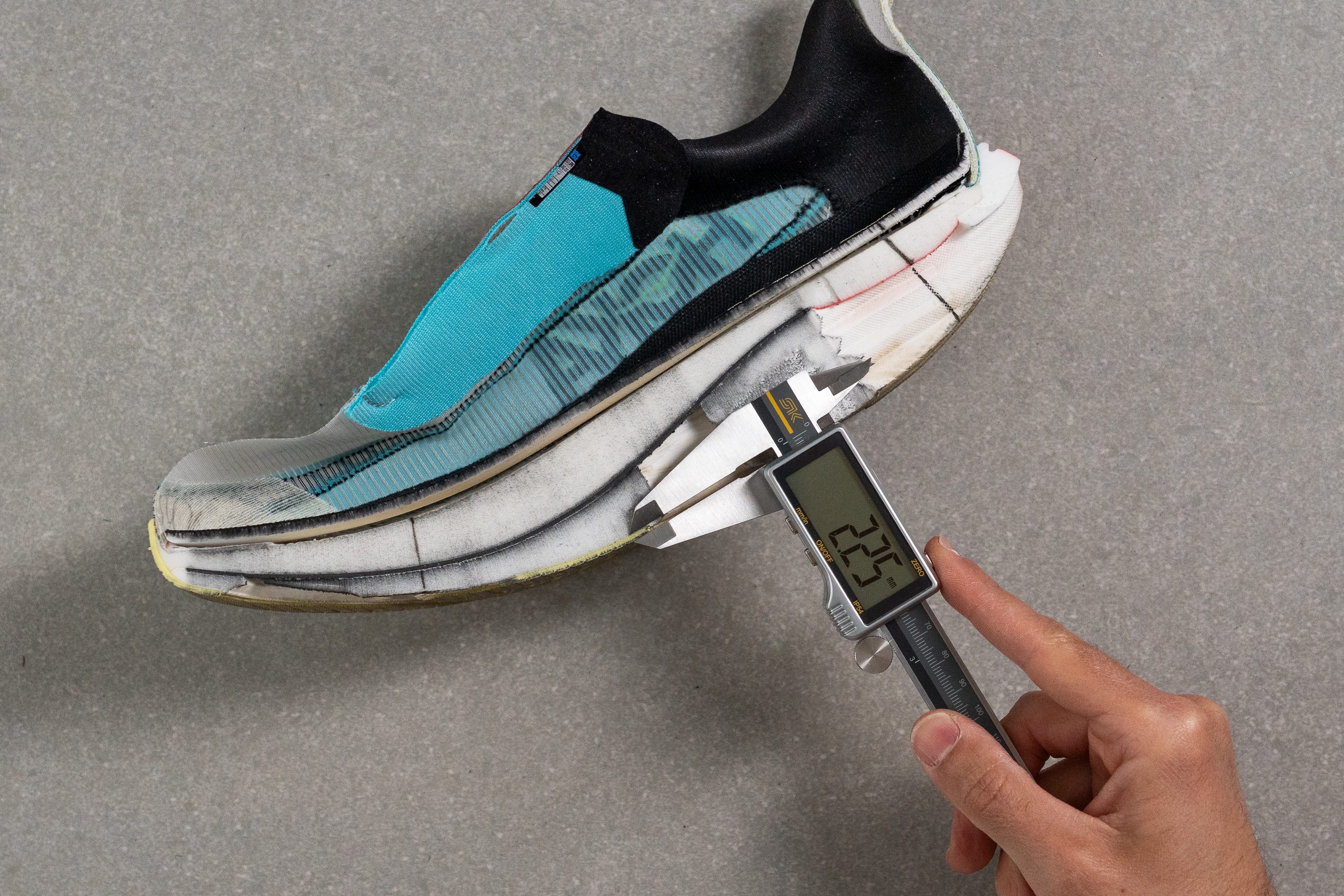
| Cielo X1 2.0 | 2.3 mm |
| Average | 3.2 mm |
Misc
Insole thickness
The insole of the Cielo X1 2.0 is ultra-thin at 3.1 mm, designed to boost midsole volume without exceeding the World Athletics limit. We discovered it’s made from a supercritical TPEE foam (similar to Adidas’ Lightstrike Pro) for getting some marginal gains.
Indeed, we appreciate premium-level touches like this one—it’s a small but performance-focused detail!
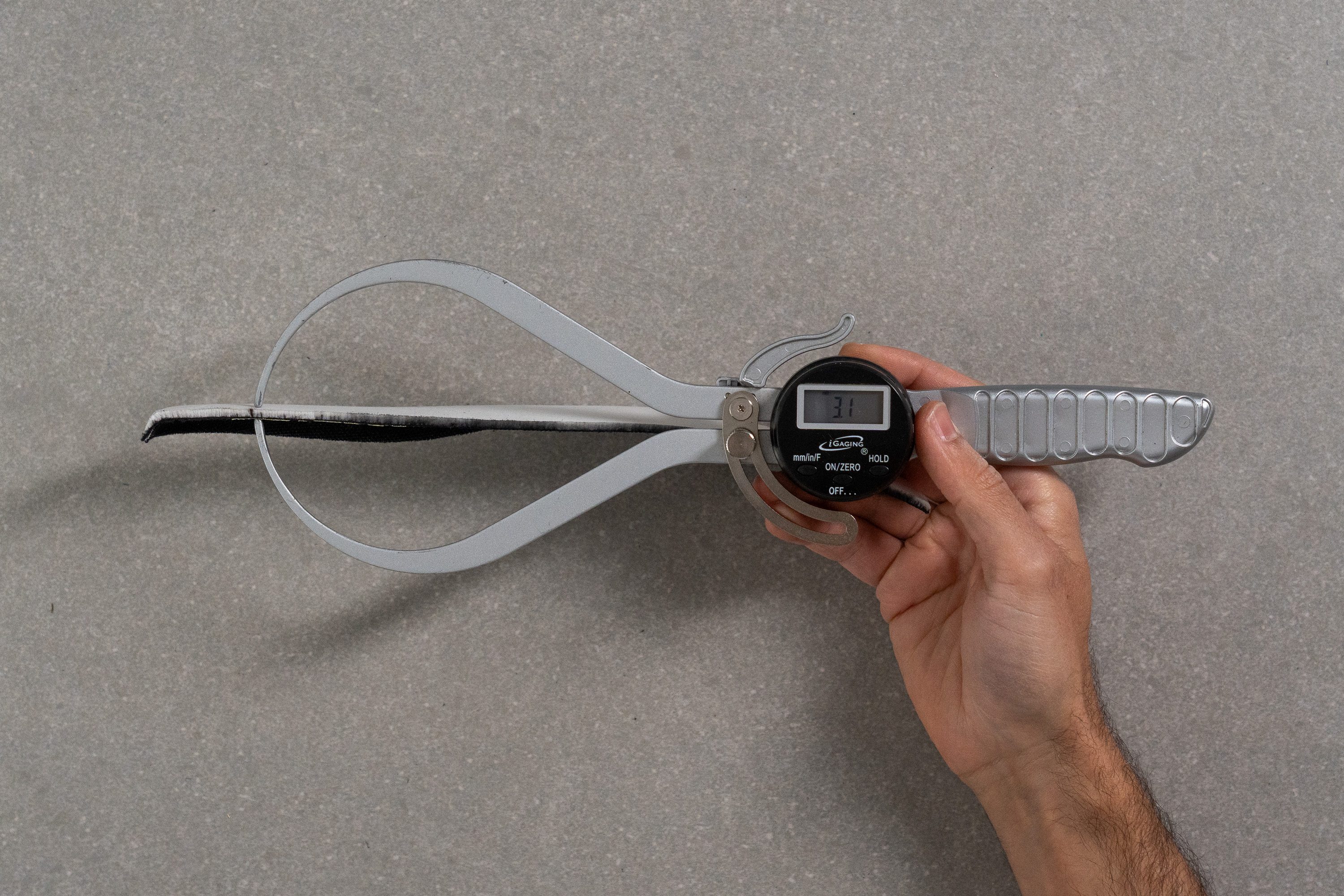
| Cielo X1 2.0 | 3.1 mm |
| Average | 4.5 mm |
Removable insole
Unlike some supershoes, the insole of the Cielo X1 2.0 is removable. Still, we wouldn’t recommend taking it out—it’s one of the standout features that adds to the shoe’s performance.
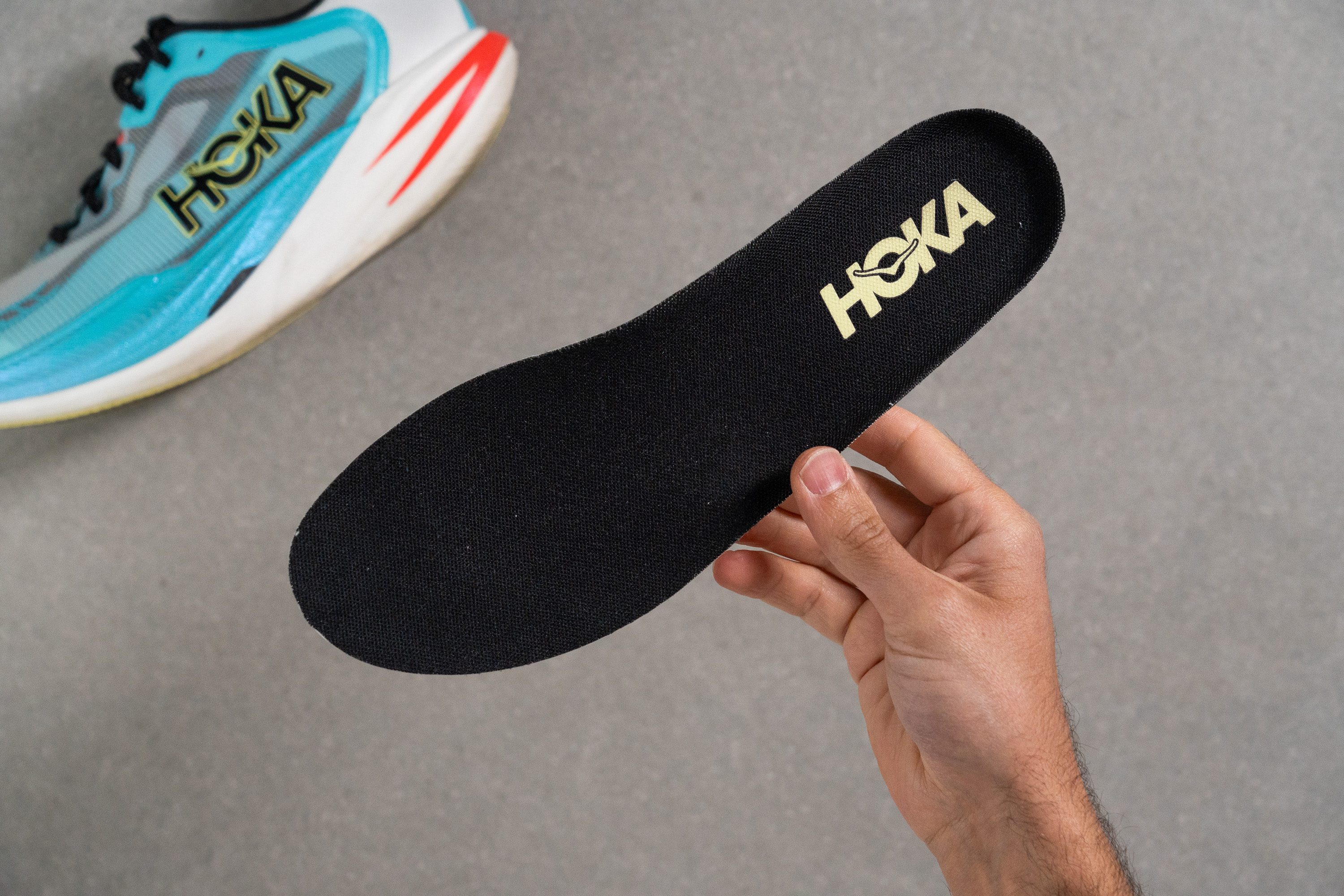
| Cielo X1 2.0 | Yes |
Midsole softness in cold (%)
We were a bit let down to see the Cielo X1 2.0 become 42% firmer after just 20 minutes in the freezer, as that's a cold-weather performance drop that’s hard to overlook.
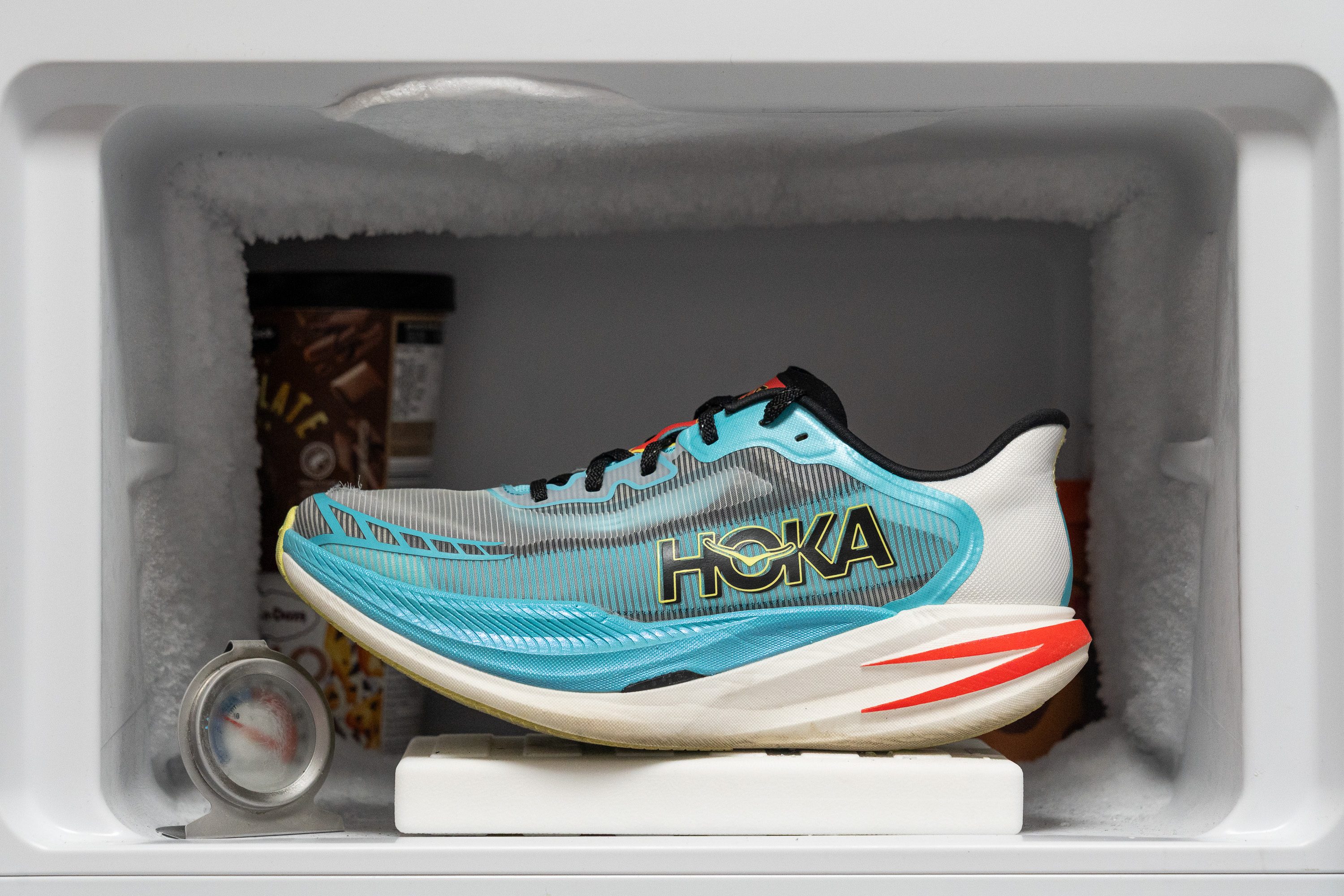
| Cielo X1 2.0 | 42% |
| Average | 25% |
Reflective elements
We didn’t spot any reflective elements anywhere on the upper of the HOKA Cielo X1 2.0.
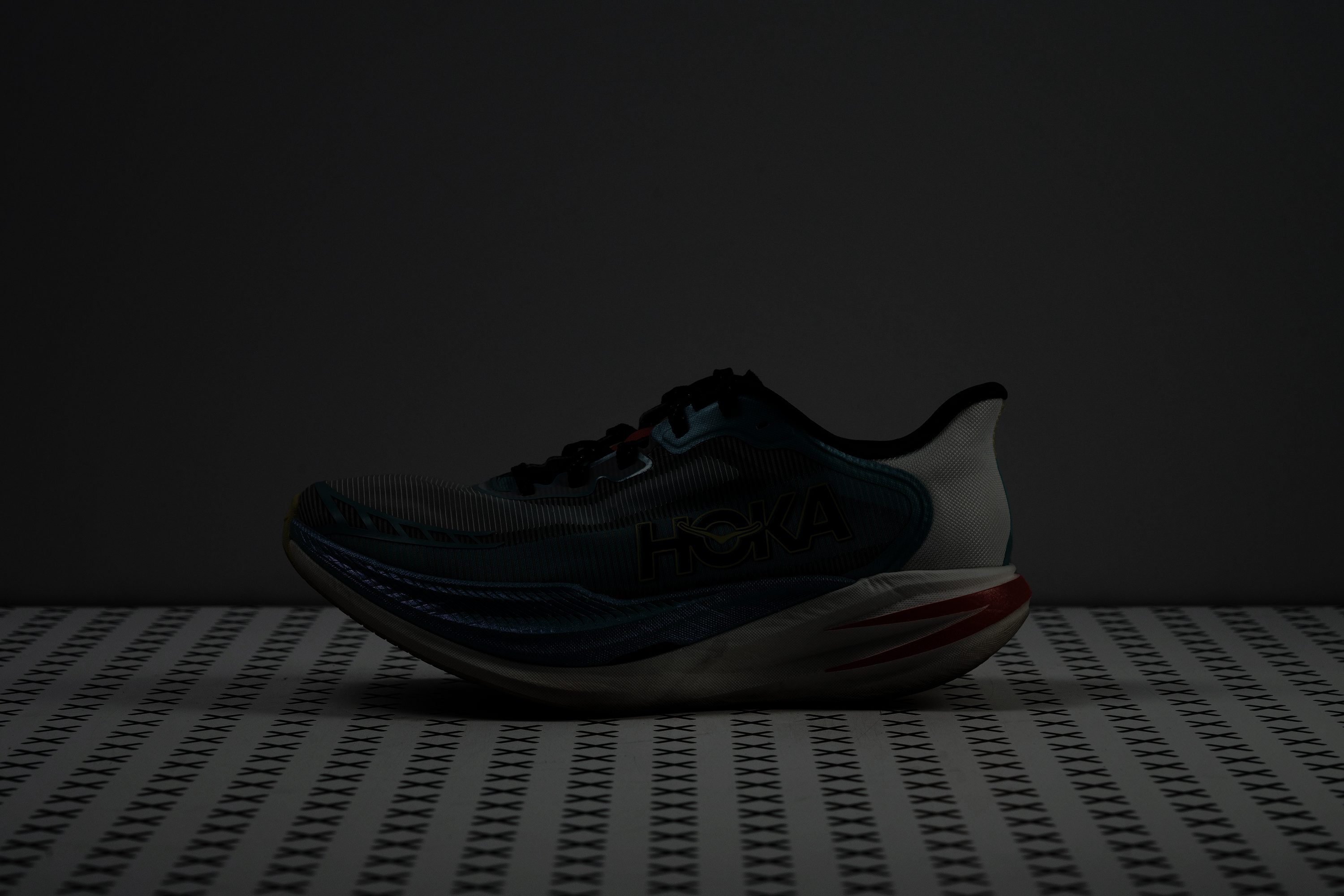
| Cielo X1 2.0 | No |
Tongue padding
We tested the lacing system and found it refreshingly simple, sticking to a proven setup with TPU-reinforced punched eyelets and one extra at the top. The laces are an upgrade from the first version too, though we believe there’s still room for improvement here.
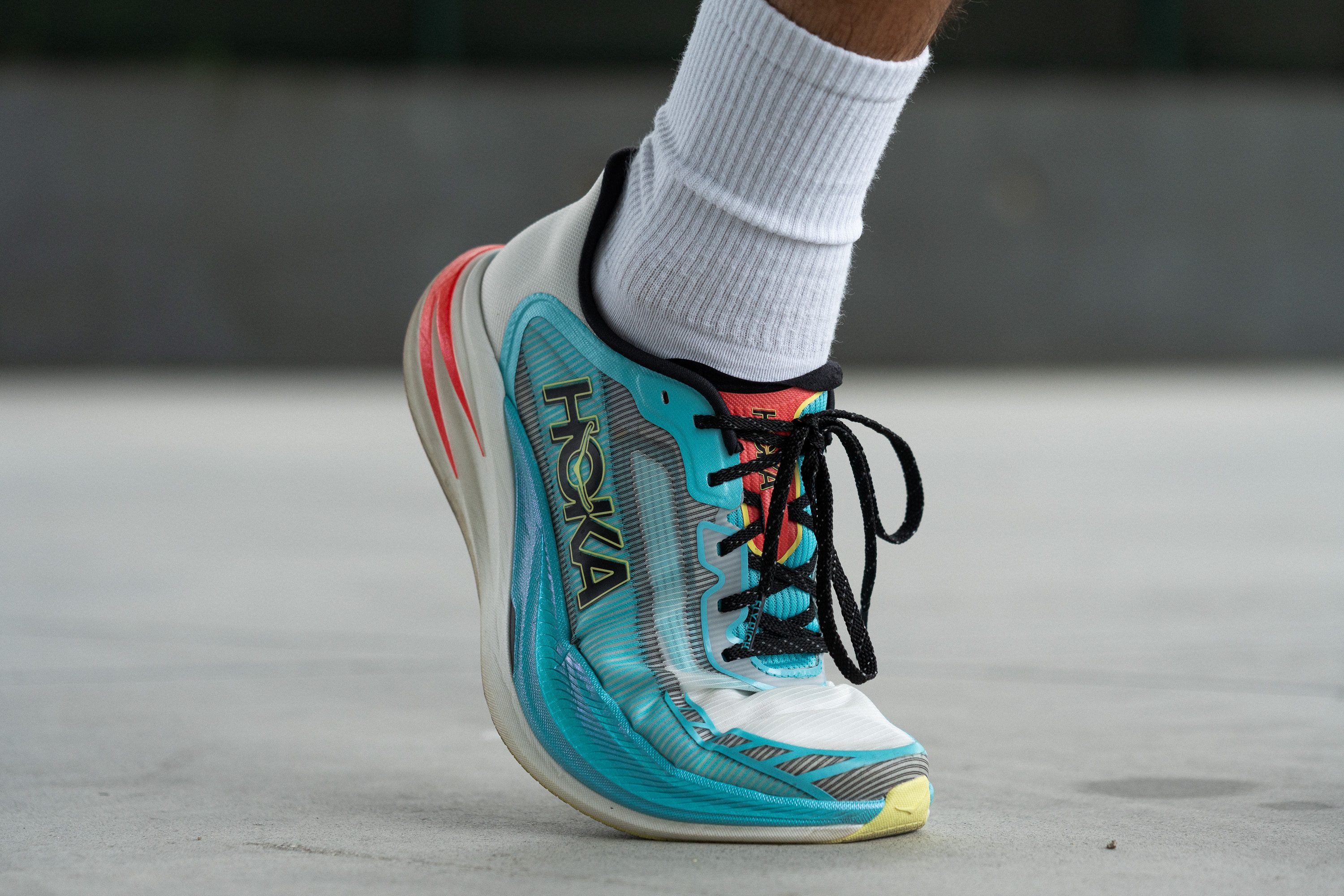
As expected from a racer, the tongue is minimalist and ultra-thin, with just 1.7 mm of padding. There’s no foam at all protecting the instep, it’s the upper’s material thickness alone!

| Cielo X1 2.0 | 1.7 mm |
| Average | 5.8 mm |
Tongue: gusset type
The tongue isn’t gusseted. That’s not a real drawback, since most supershoes follow this design, but some runners might prefer a slightly heavier shoe if it stops tongue shifting—especially when tighter lacing is risky due to the zero-padding setup.
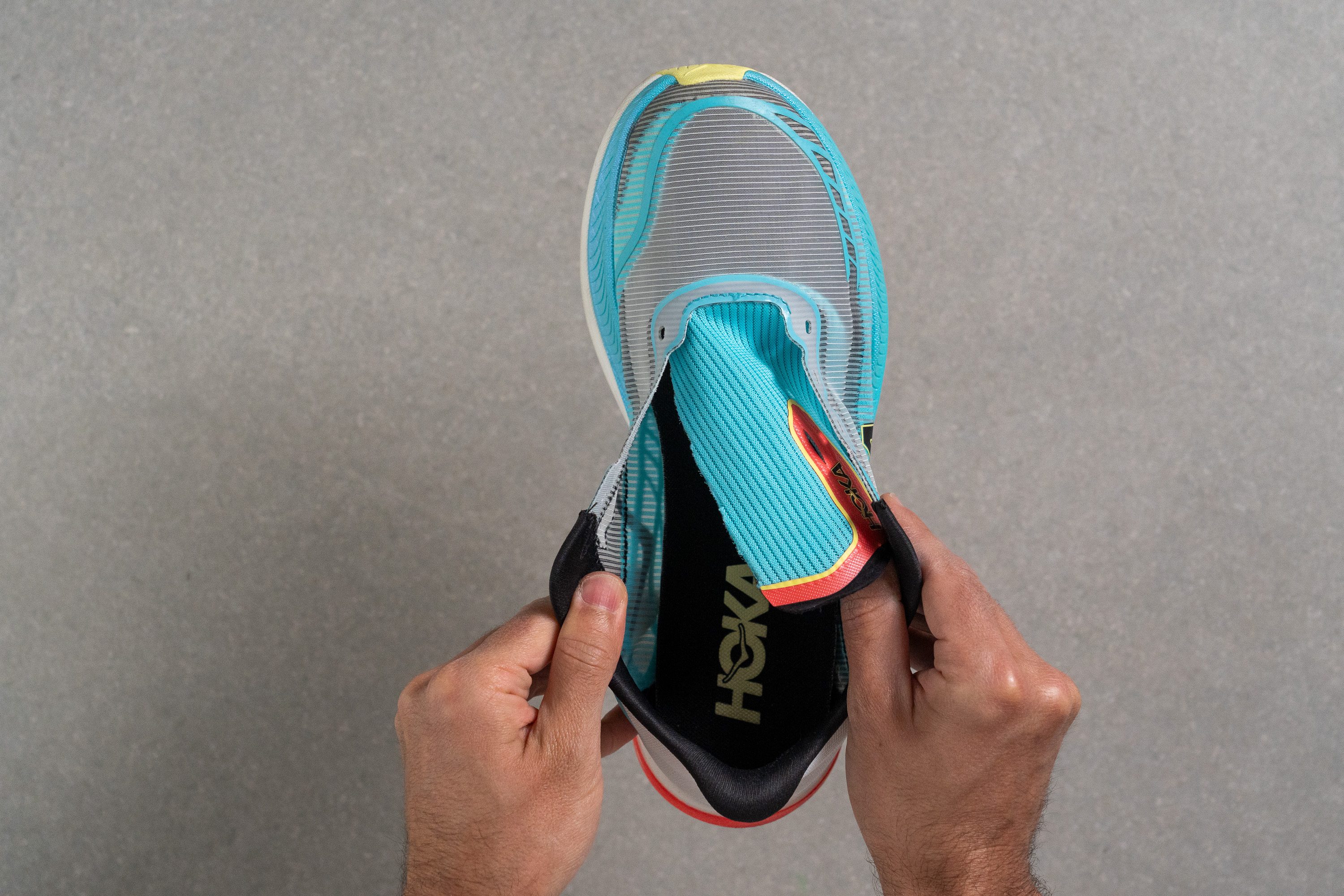
| Cielo X1 2.0 | None |
Price
The price of the HOKA Cielo X1 2.0 isn’t exactly appealing, as it sits at the higher end of the supershoe range. Runners on a tighter budget might lean toward the Saucony Endorphin Pro 4, which delivers similar performance at a lower cost.
| Cielo X1 2.0 | $275 |
Heel tab
The Cielo X1 2.0 features HOKA’s familiar extended heel collar design, though it’s more toned-down compared to the exaggerated version found in their training models like the Clifton 10.
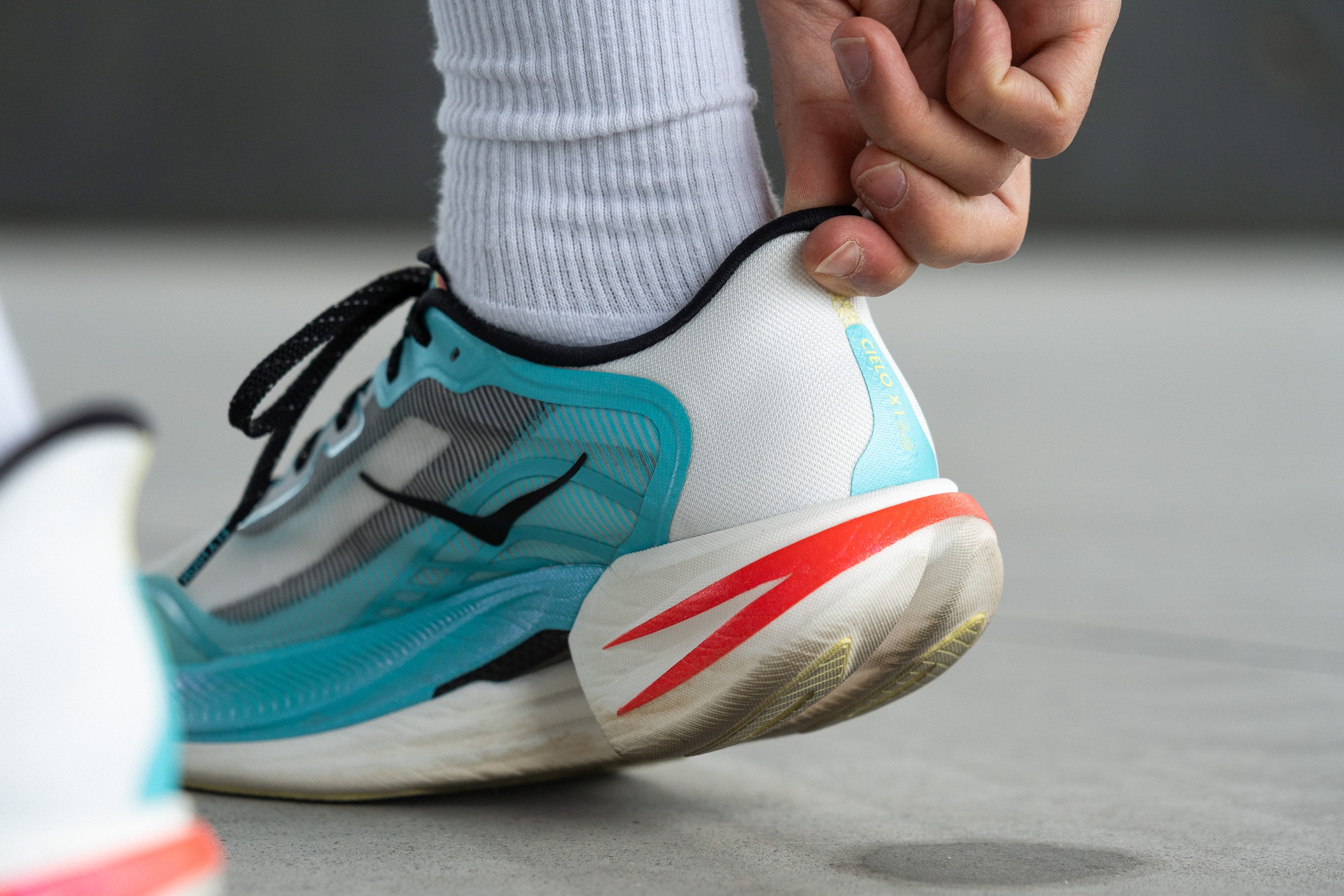
| Cielo X1 2.0 | Extended heel collar |

